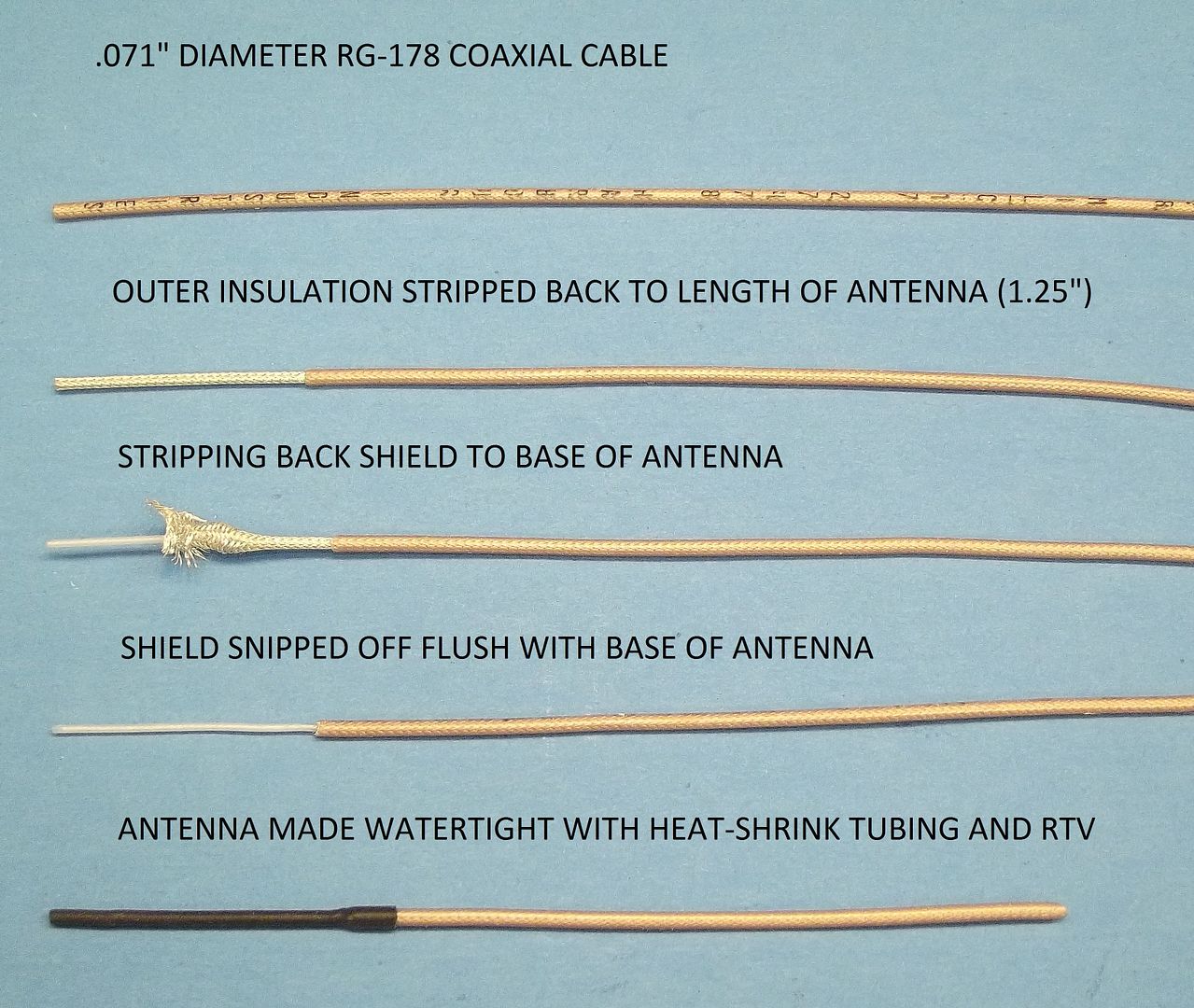
It’s the job of the coaxial cable to shield the conducting central wire between antenna and receiver – this is done through a grounded braded metal shield that surrounds the central conductor. Remove the shield from the conductor and you have an antenna. And that’s what the above photo demonstrates: the steps taken to turn the end of the coaxial cable into a 2.4gHz full-wave antenna.
A thorough discussion on how to move the antenna off-receiver to another location is covered here:
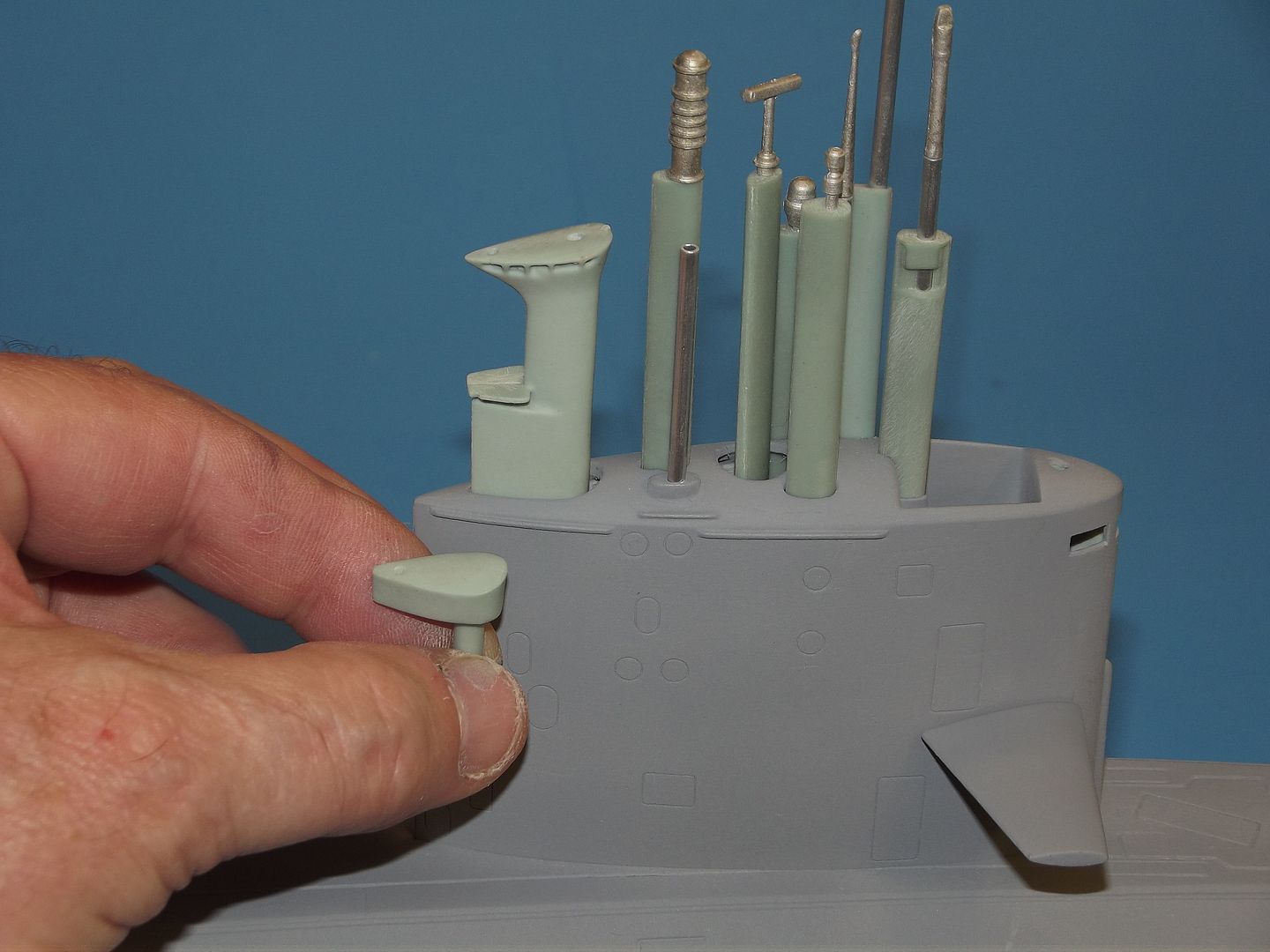
On the many occasions when I operate the model with most of the masts left in the field-box, I cover the gapping snorkel mast hole with this plug. The top of the plug mimics the contour of the snorkel mast top. It too is detailed with the same amber submarine identification light as the full-up scale snorkel mast.
I seldom operate an r/c submarine with all its masts up. Besides not being scale (rarely are they all deployed at the same time on a real submarine) those projecting items simply invite disaster through handling or collision.

Jumping ahead a bit to show the completed model parts here. You can see to good advantage here some of the weathering effects applied to the model to give it that ‘real’ look that’s so important to me as a kit-assembler.
As you can imagine, it’s a fool’s errant to drive this r/c submarine around recklessly with all those delicate masts in place … and yes, I’ve been described as being a bit aggressive when my submerged boat finds itself in a target rich environment. So, the array you see here is for show only: when I put this beat in the water I’ll operate with only the #2 scope raised atop the sail – as that’s simply piece of aluminum tube topped with a scope head, it’s no big deal if I bend it back during a patrol. (Yes, spare #2 scopes are in the field-box).
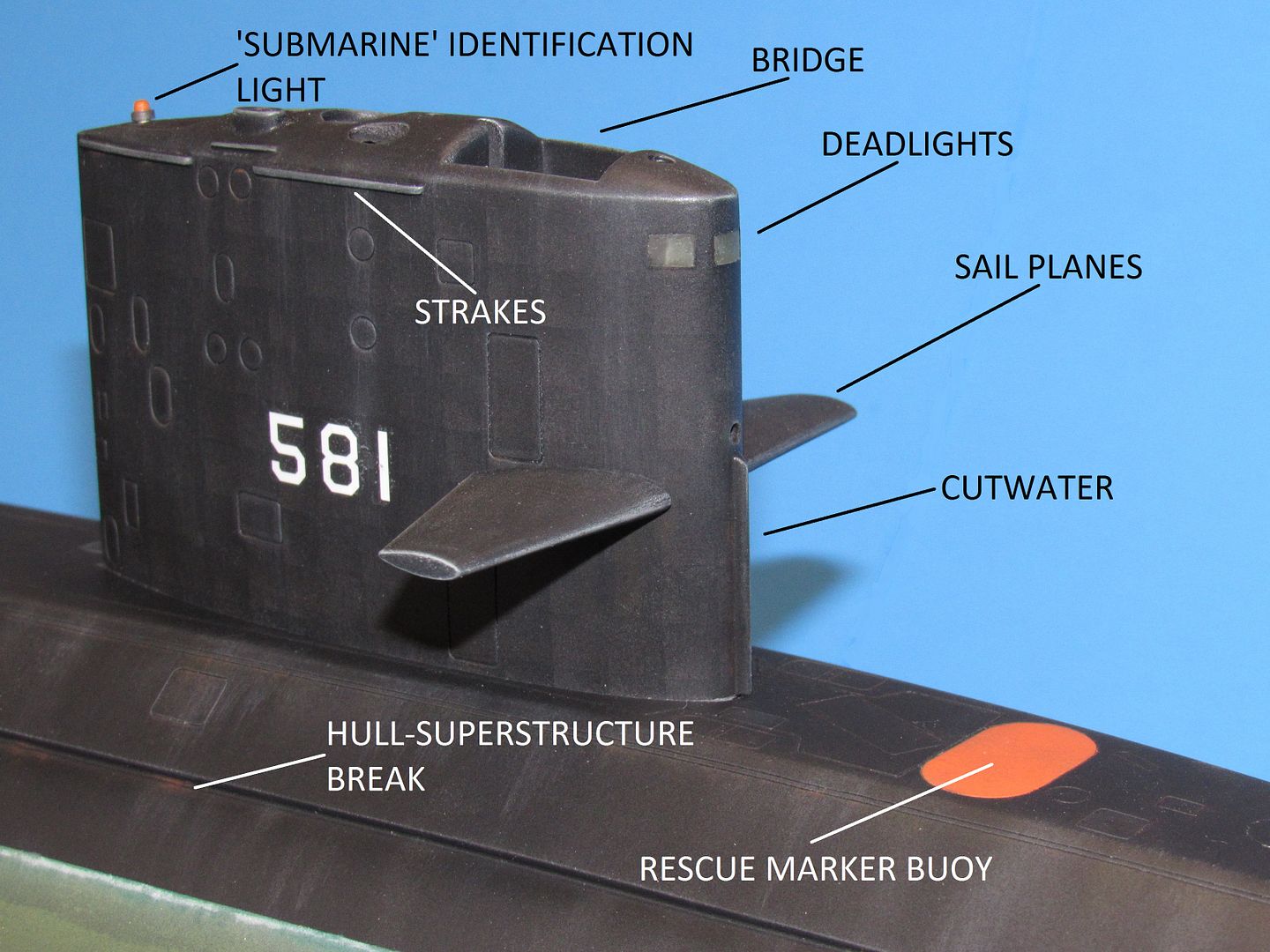
The SKIPJACK, BARBEL, and the BENJAMIN FRANKLIN class submarines were the last American combatants to provide dead-lights (windows) set within the leading edge of the sail -- a relic from days of old when a submarine could get caught on the surface in bad weather. A portion of the free-flooding space within the sail, adjacent the high mounted bridge cockpit, was set aside for those moments when green-water would break over the sail and drench the bridge. Post-war boats had no steering gear or other ship-control gear within this enclosure (other than a phone-talker jack, and maybe a simple chart-table), it was just a place to duck when required, but with an outside view. Now, in a navy devoid of any combatant submarines tied to the surface by air-breathing machinery, sail dead-lights are a relic of the past and no longer provided in American combatant type submarines.
But, on a model depicting a boat that featured them, it’s almost a crime not to incorporate this eye-catching feature on the display. Most of us are happy simply simulating the glazing with paint and gloss-clear-coat to suggest such windows. However, David Manley showed us all a neat way to quickly, and realistically, represents submarine sail dead-lights – honest to goodness transparent deadlights. And a means to simulate them quickly and easily.
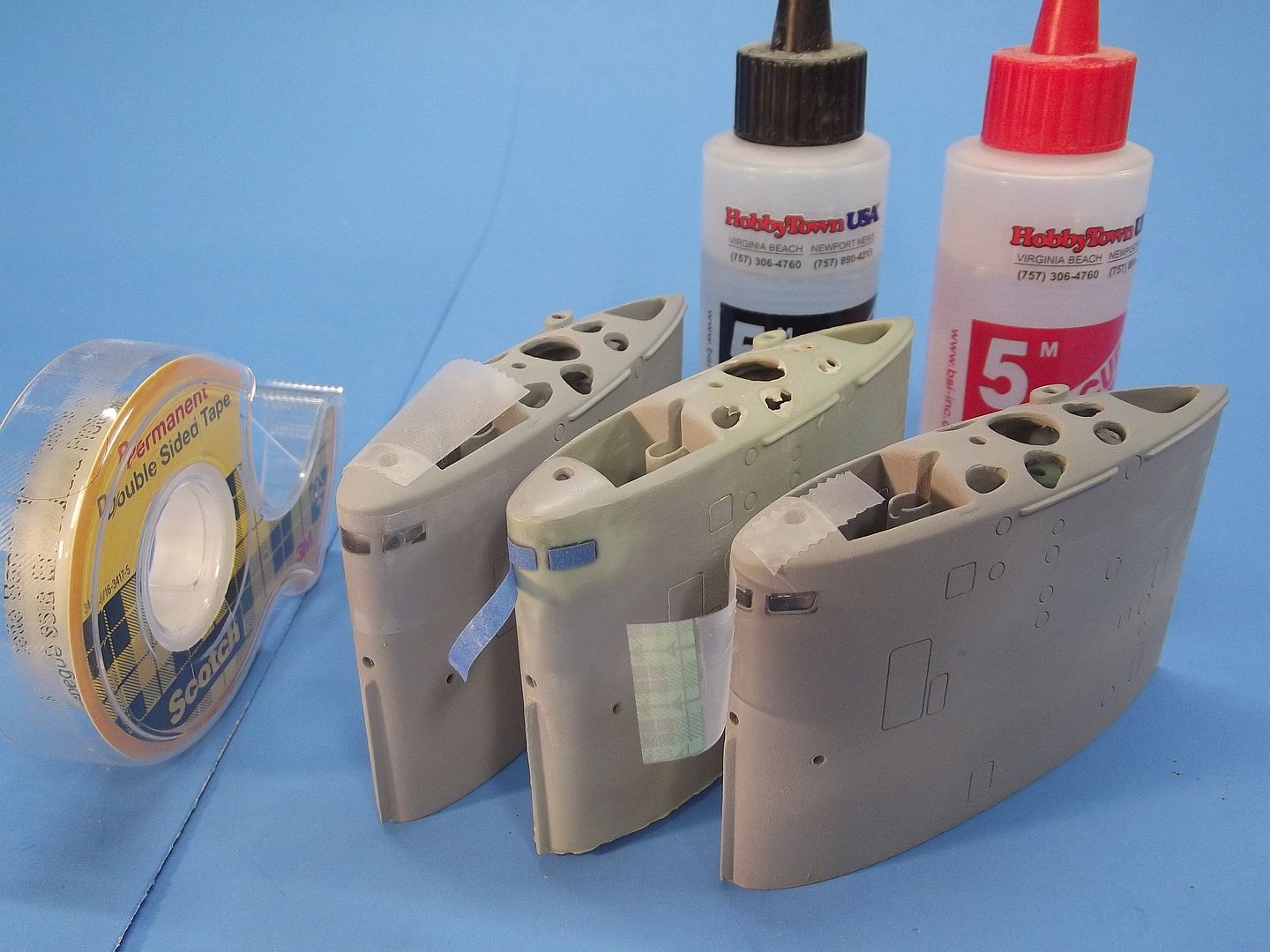
I’m presenting three BLUEBACK sails here to illustrate the deadlight-from-epoxy-glue method David advocated.
First step, to the left --enlarge the square holes a bit – the objective is to prevent any raw edges from being observed after the work is done. Then, a mylar type self-adhesive tape was wrapped around the leading edge of the sail (the surface of this type tape is perfectly smooth, producing a reasonably unblemished surface to the eventual epoxy deadlights), covering the three square holes where the deadlights will take shape.
Second step, center -- mix up some standard, 5-minute epoxy glue and quickly introduce it to the inside leading edge of the sail so as to fill the open deadlight holes. Holding the sail, leading edge down, and slowly rocking it side-to-side to spread the still liquid glue over and into the square holes.
Third step, center -- pull off the tape and polish the surface of the cured epoxy with #2400 sandpaper followed by a water based polishing compound. Low tack masking tape, cut to the length and width of the deadlights was applied over the epoxy windows – the sail, at that point, ready for painting.
An unfortunate artifact of the deadlight-from-epoxy method is the unavoidable introduction of air-bubbles as the two parts of the epoxy glue are mixed. But, at these small scales the clear parts with the occasional air-bubble entrapped in the epoxy gives a ‘busy’ look to what’s supposedly going on behind the deadlights (yes, a convenient rational to an undesirable occurrence, but … what the hey!).
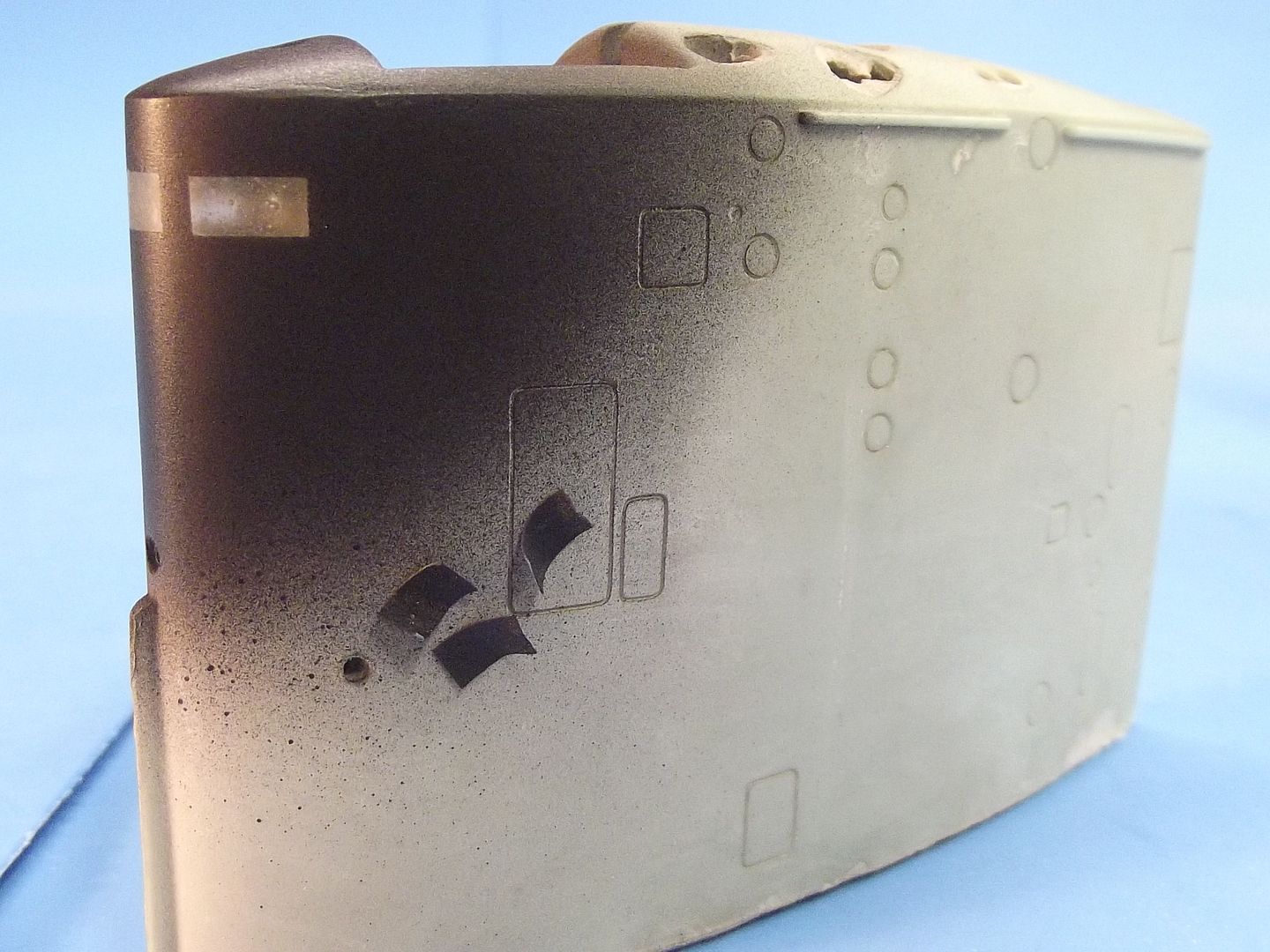
As the epoxy glazing is a bit wider and taller than scale, and the deadlight mask a bit smaller in dimensions, the possibility of observing the resin edges of the glazed holes is eliminated. As demonstrated in this close-up of the epoxy deadlights once the masking is removed.
Before laying down any paint I insured that all dings and flaws at the sails leading edge on or near the edges of the polished deadlight glazing was puttied, primed and sanded smooth. After the deadlight masking was in place I had to avoid putty or primer on or near the edges of the masking, as the colors of those agents would become visible once the masking is removed after all painting is completed. And, for that reason, only the final color (a very, very dark gray for this model) around the clear parts substitutes for primer.
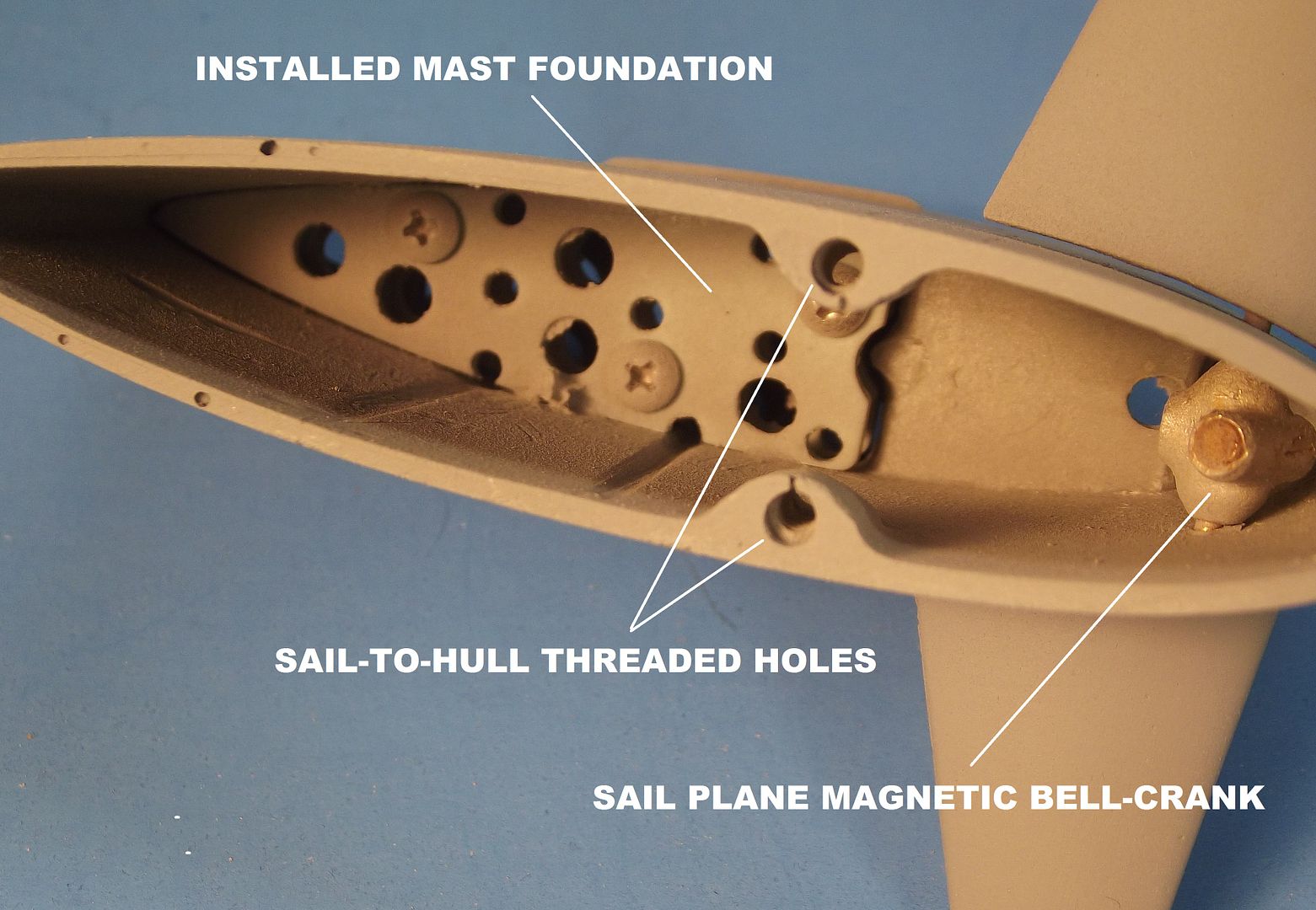
There are three things going on within the sail. First is the mast foundation: this two-platform structure insures that the bases of the masts are held securely atop the sail, and are also in perfect alignment with one another.
The second item are the two threaded foundations at the base of the sail. These receive 4-40 machine screws that run up from holes within the top of the upper hull and pull the sail structure down tight into the slight trough built into the hull to nest the sail piece. And finally, the magnetic bell-crank made up to the sail plane operating shaft. The magnet replaces an otherwise awkward and space taking push-rod clevis. With magnets, it’s an automatic make/break proposition with little if any back-lash. Nothing could be simpler.

Unfortunately, the angular off-set of the intermediate drive shaft was found to be rather extreme, necessitated by the very low gear reduction output shaft of the standard 2.5” SD. Though the Dumas type universals at each end of the intermediate drive shaft permitted a sizable fraction of torque to go to the propeller shaft, the noise and rattling did suggest that a significant amount of torque was lost to friction at the SD and propeller shaft bearings due to excessive lateral loading. Oh, well. This ain’t a perfect world, and with today’s high capacity batteries, run time will still exceed my attention span.
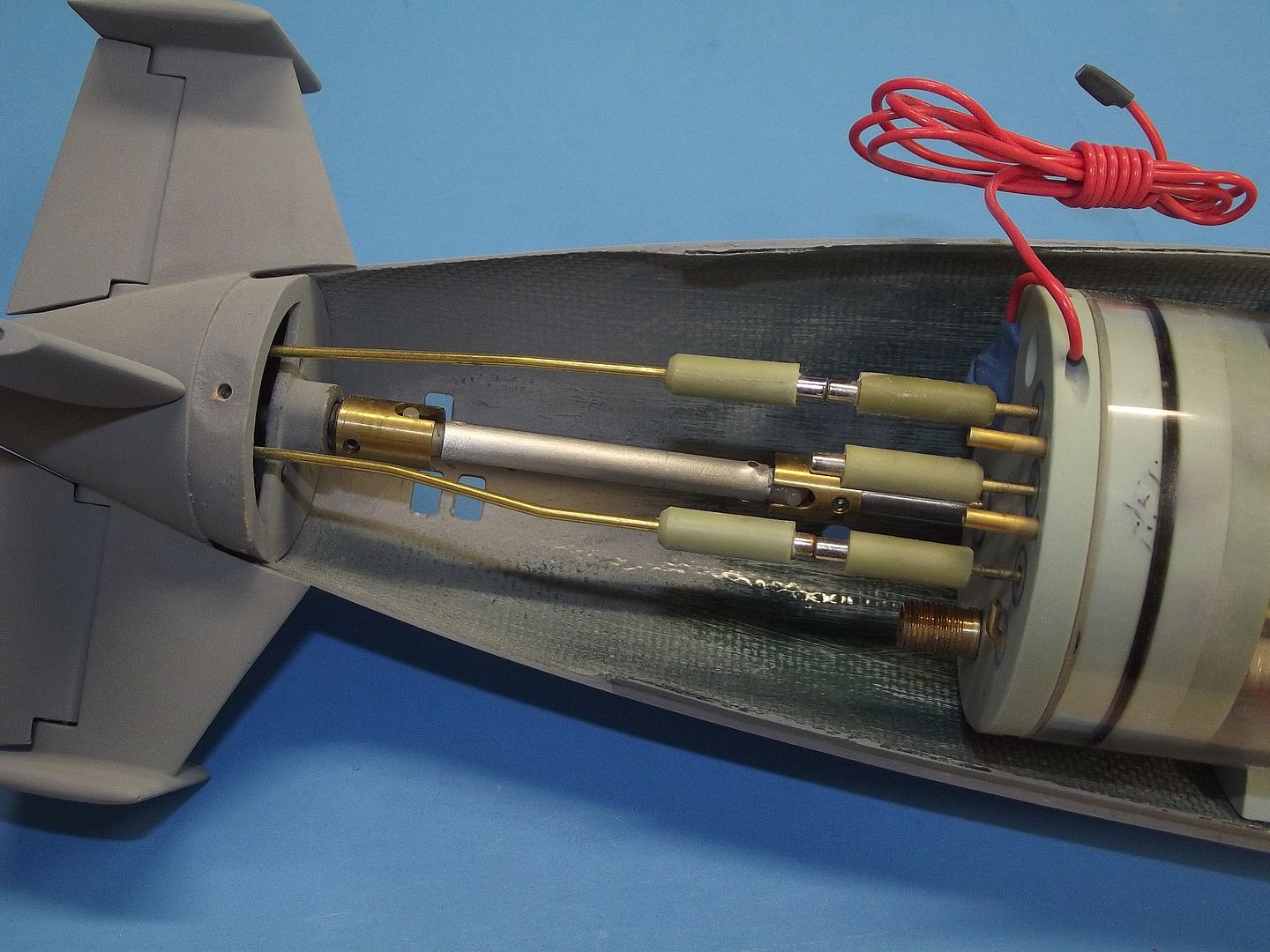
Use of magnetic couplers keeps the SD-hull interface problem a simple one: Just lower the SD onto its saddles, as I’m doing so I engage the intermediate drive-shaft, then lower the SD till the indexing hole at the bottom of the ballast tank engages the indexing pin of the pin-strap foundation. The Velcro strap is made up holding the SD in place, and the magnetic couplers for the rudders and stern planes made up. The last chore is to run the SD’s receiver antenna down the length of the lower hull (or, if using a 2.4gHz r/c system, running the antenna up the sails snorkel).
The central magnetic coupler from the SD makes up to the upper hull mounted pushrod which leads to the sail-plane linkage.
Other than the single machine screw atop the stern, that secures the hull halves together, there are no fasteners that require tools. The magnetic couplers are quick, no fuss, present no back-lash and are what makes it possible to make/break the sail-plane linkage as the hull halves are joined/separated. Today, many r/c model submarine guys employ magnets not only for linkages, but as hull securing devices – I’m the guy who made them popular. However, credit where credit is due: It was Brian Starkes, and excellent and outside-the-box-thinker, who taught me the many uses of magnets.

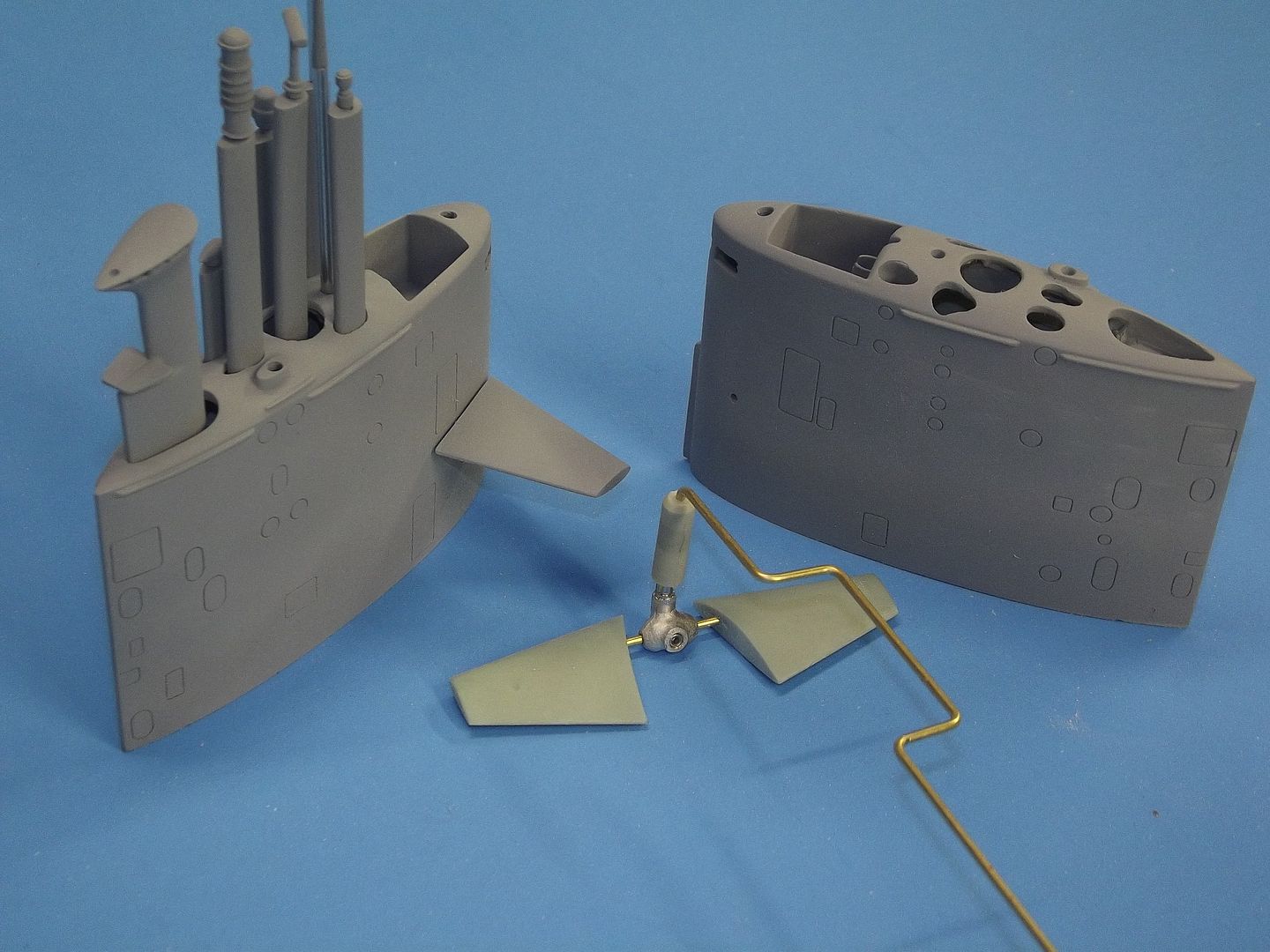
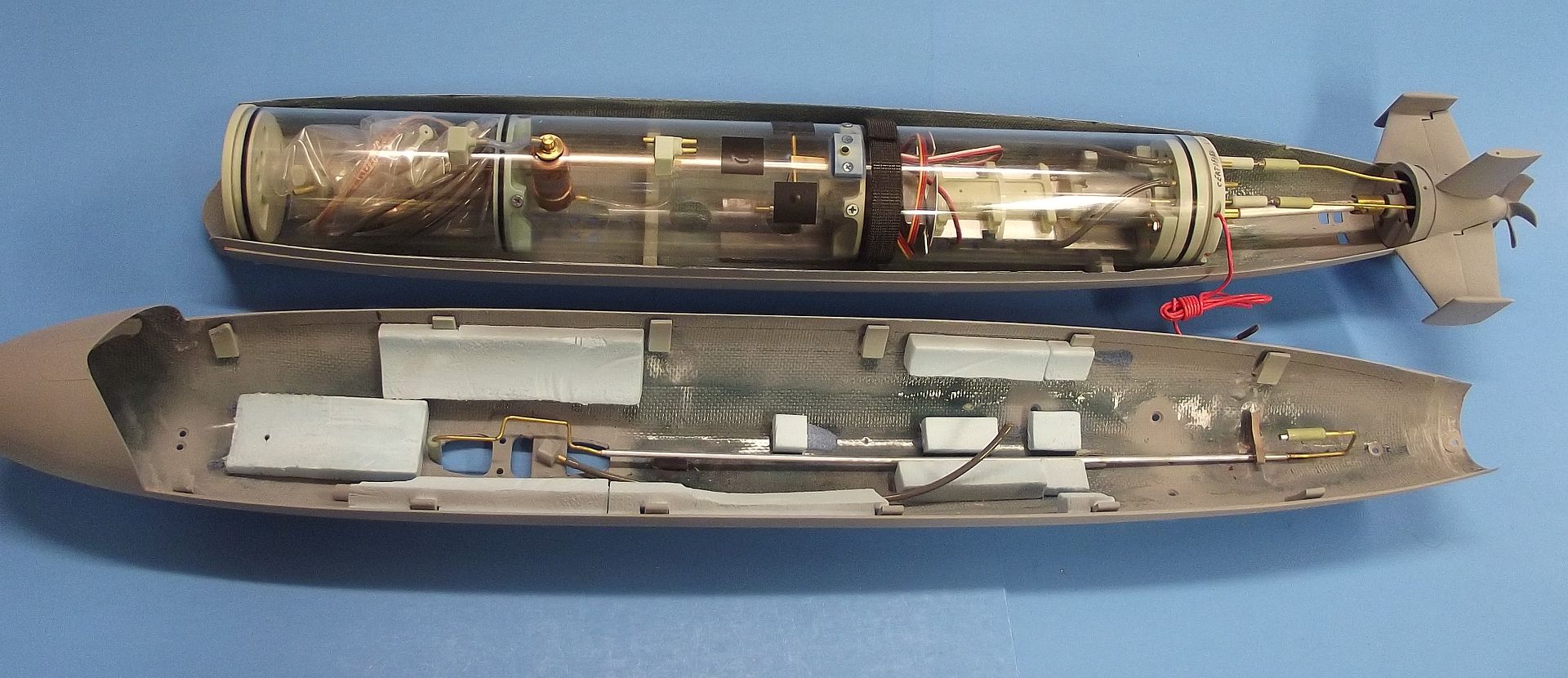
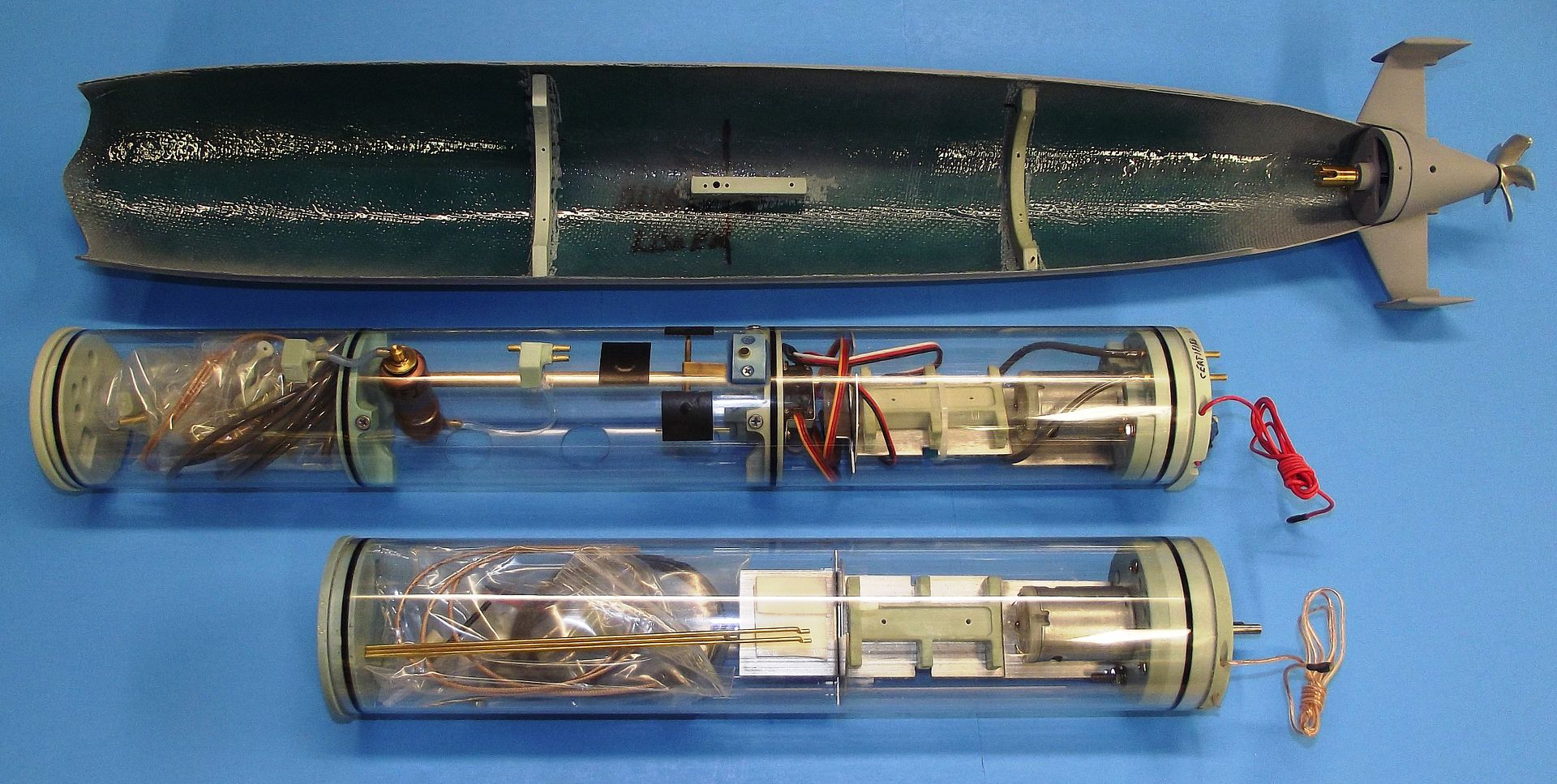
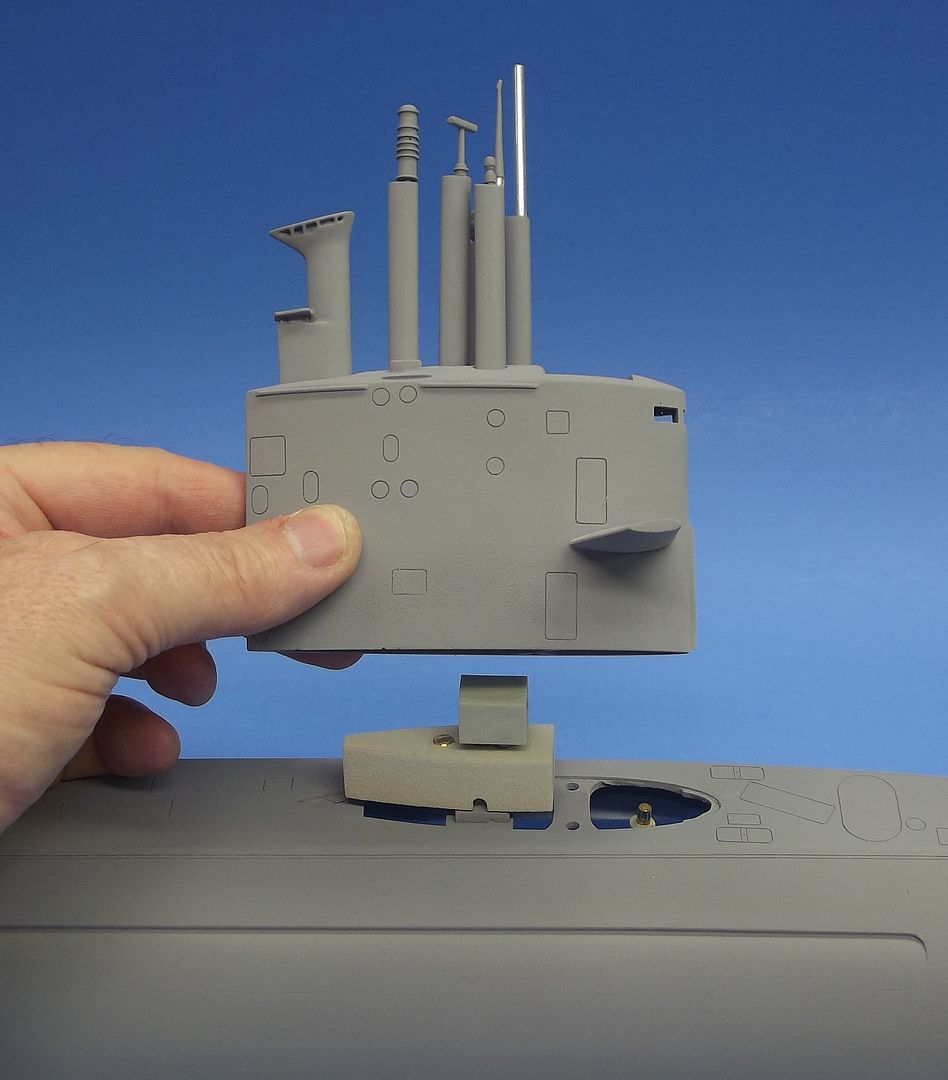
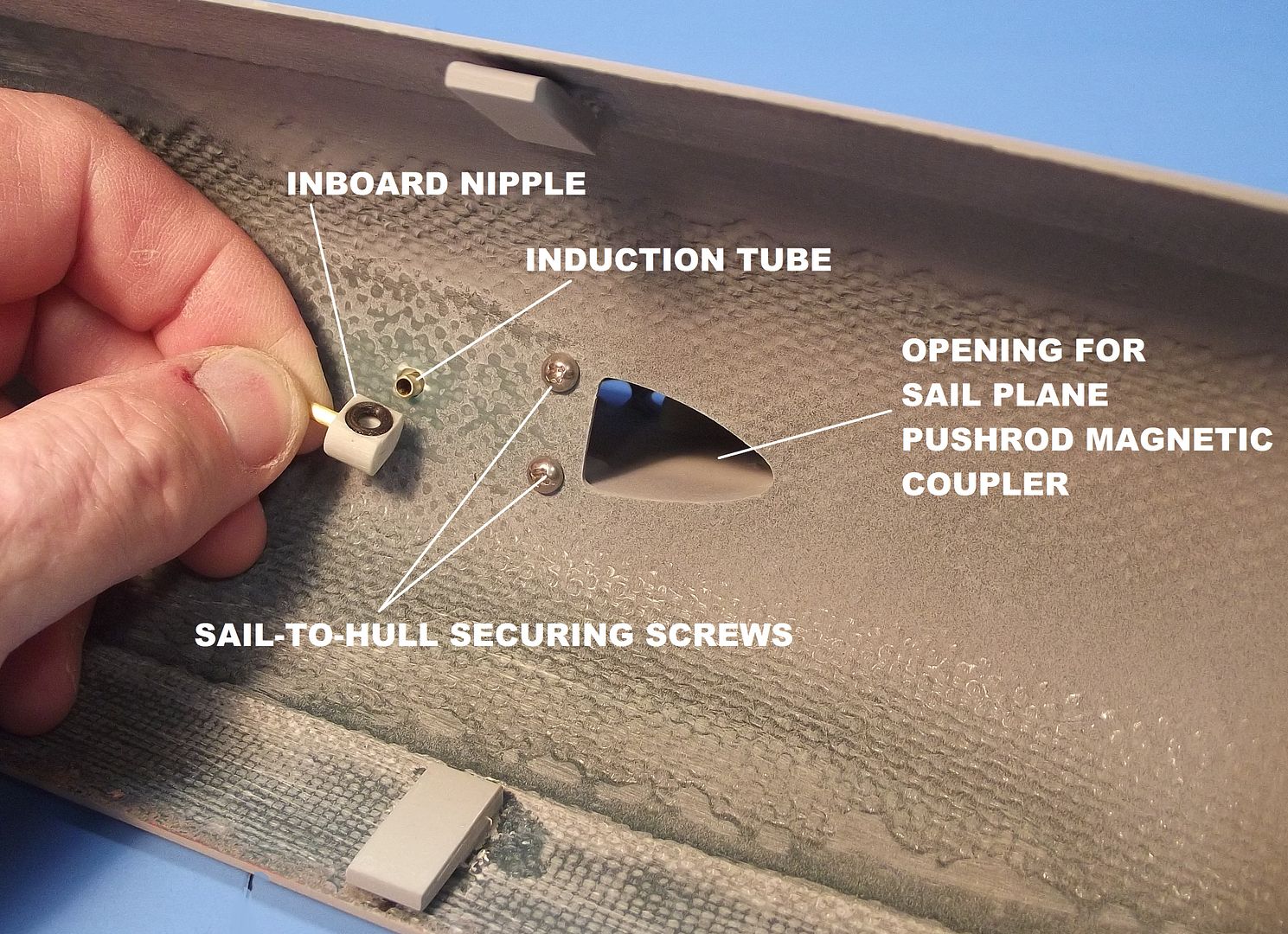
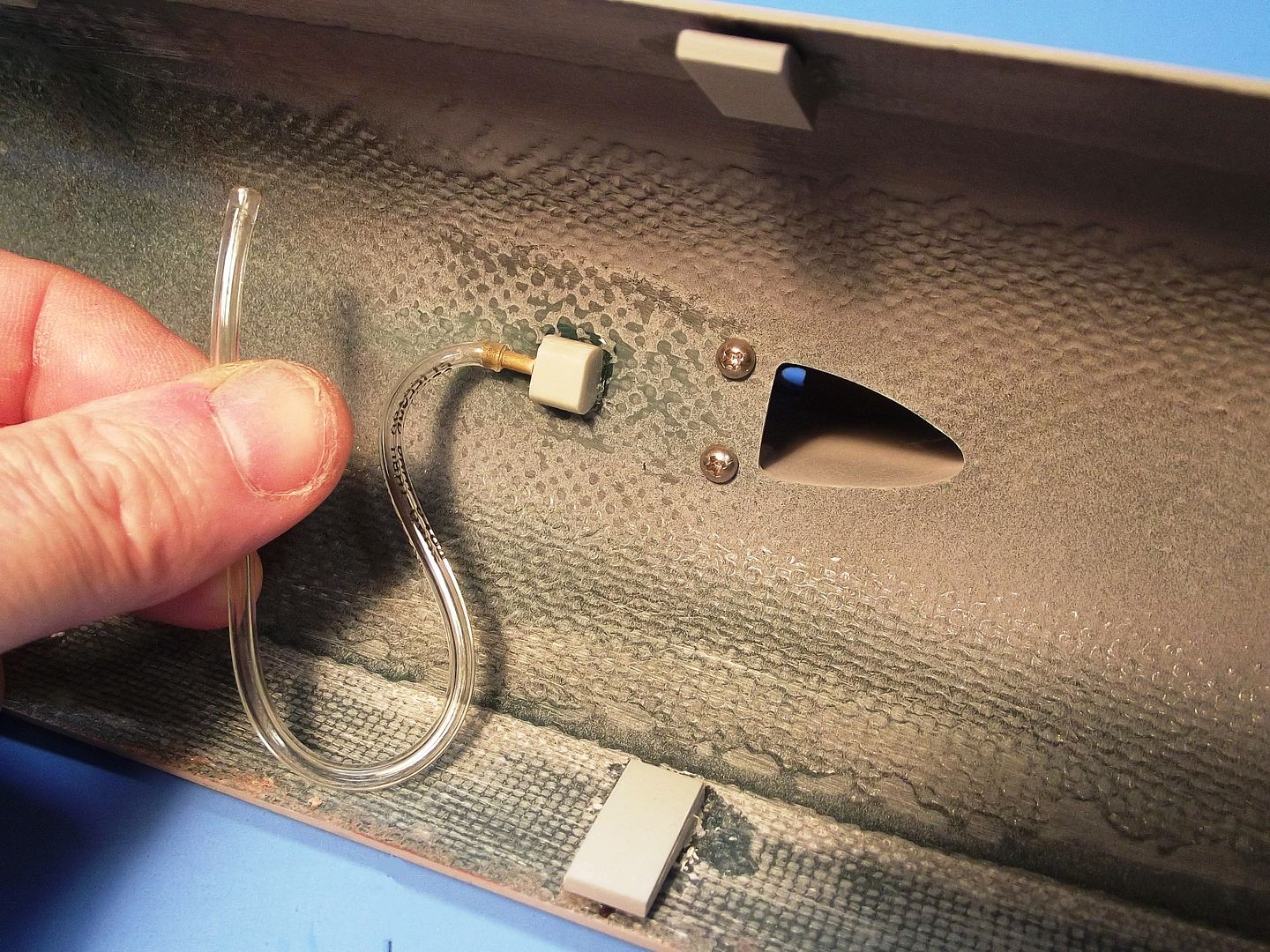
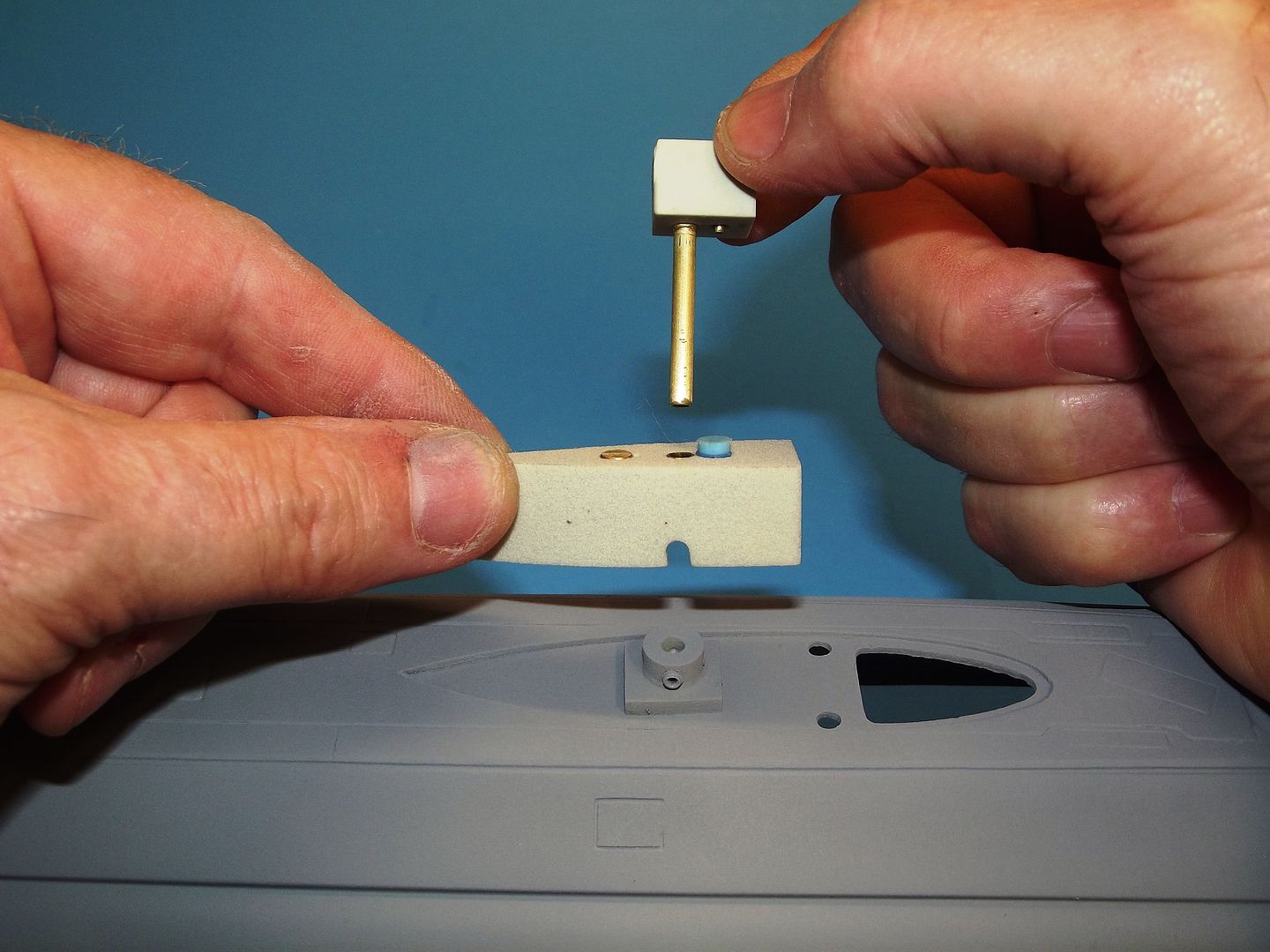

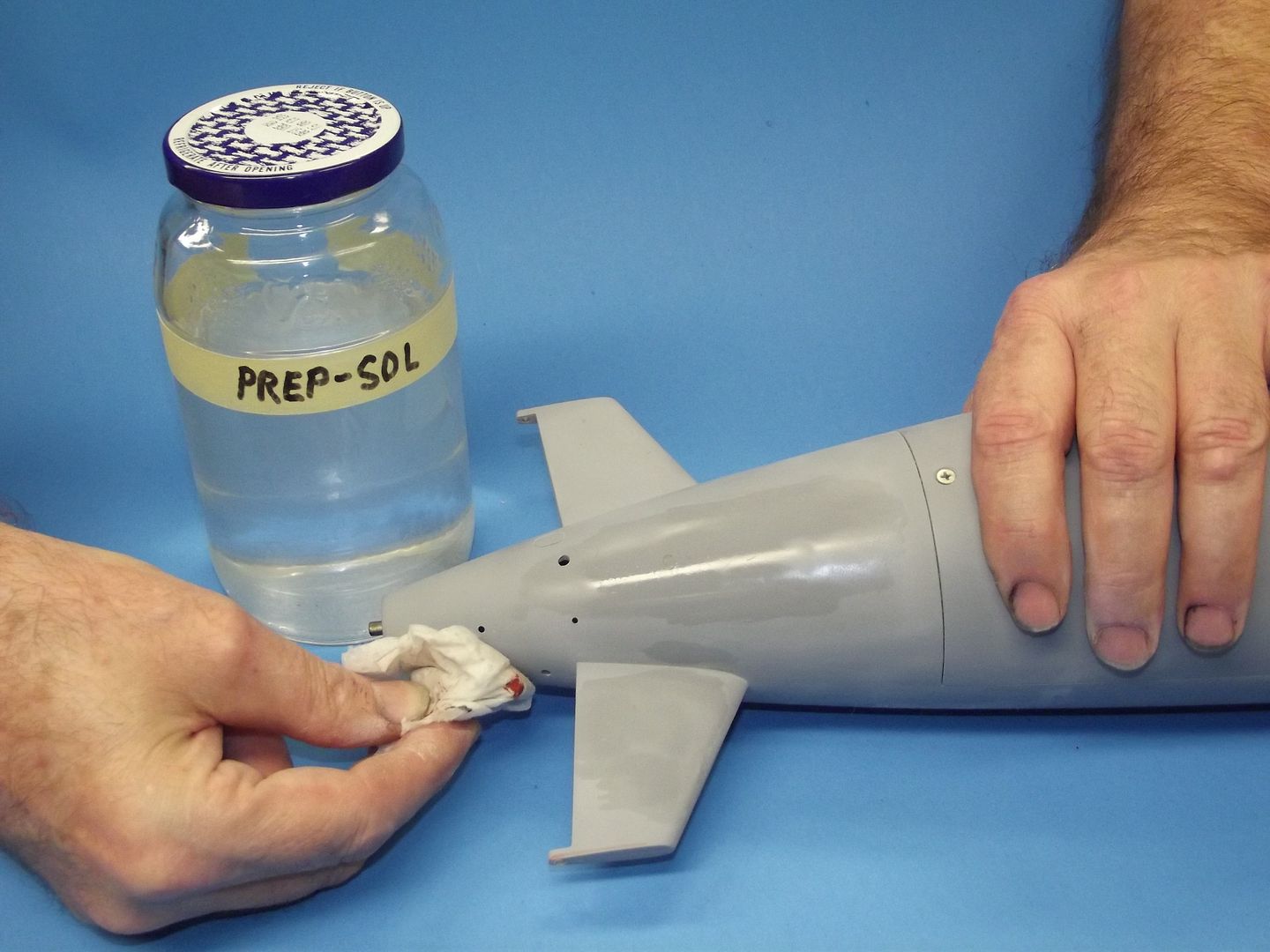
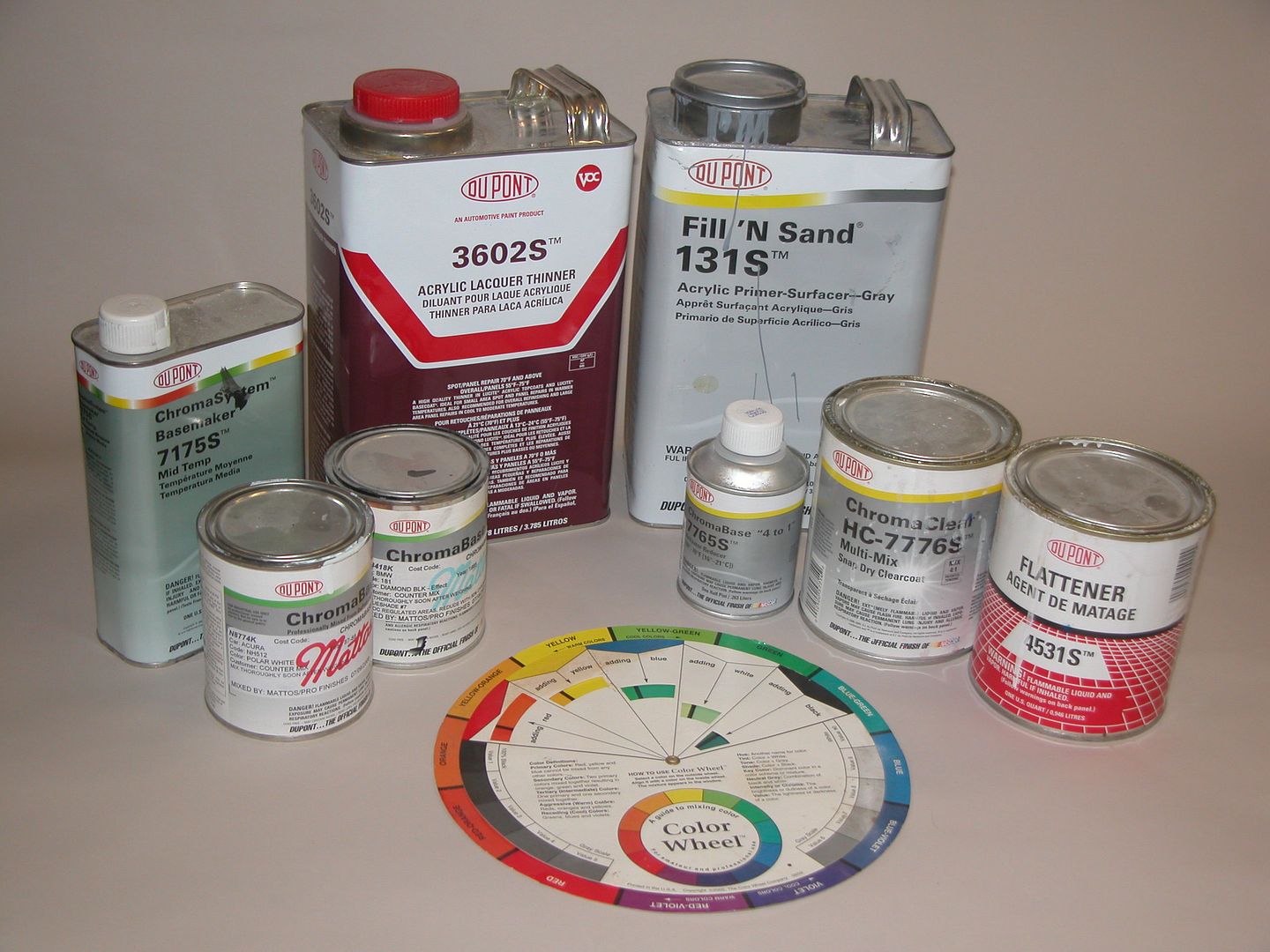
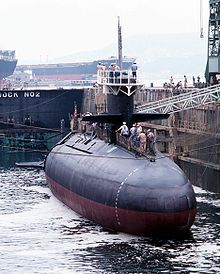
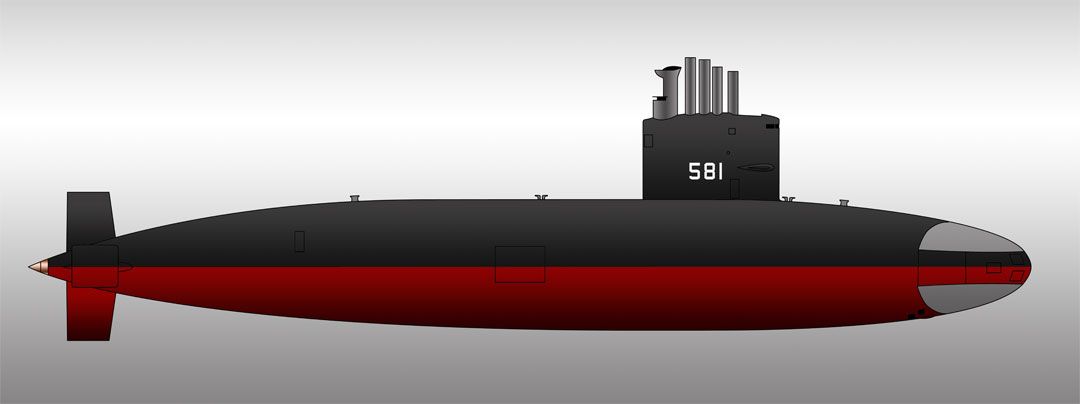
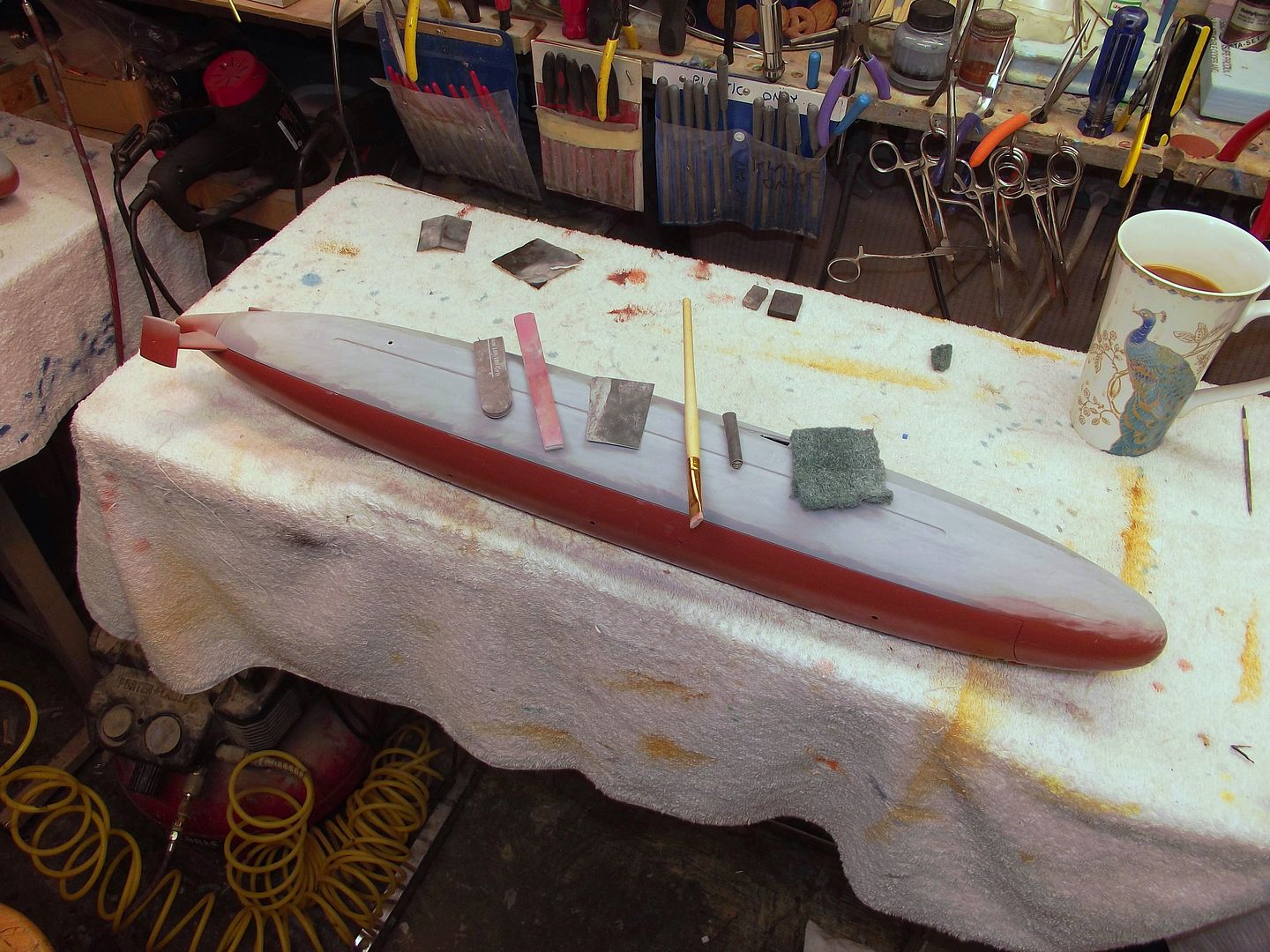
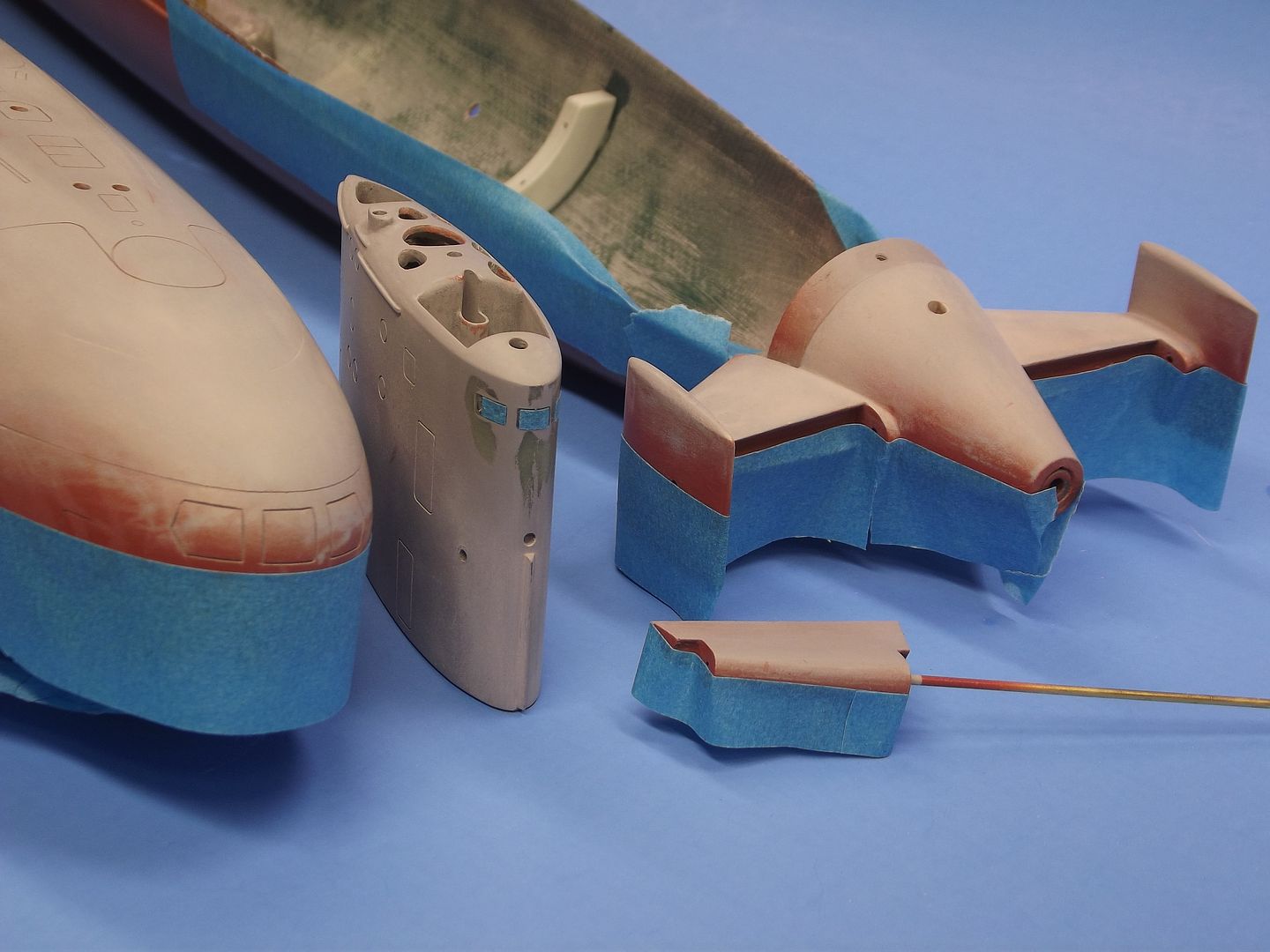

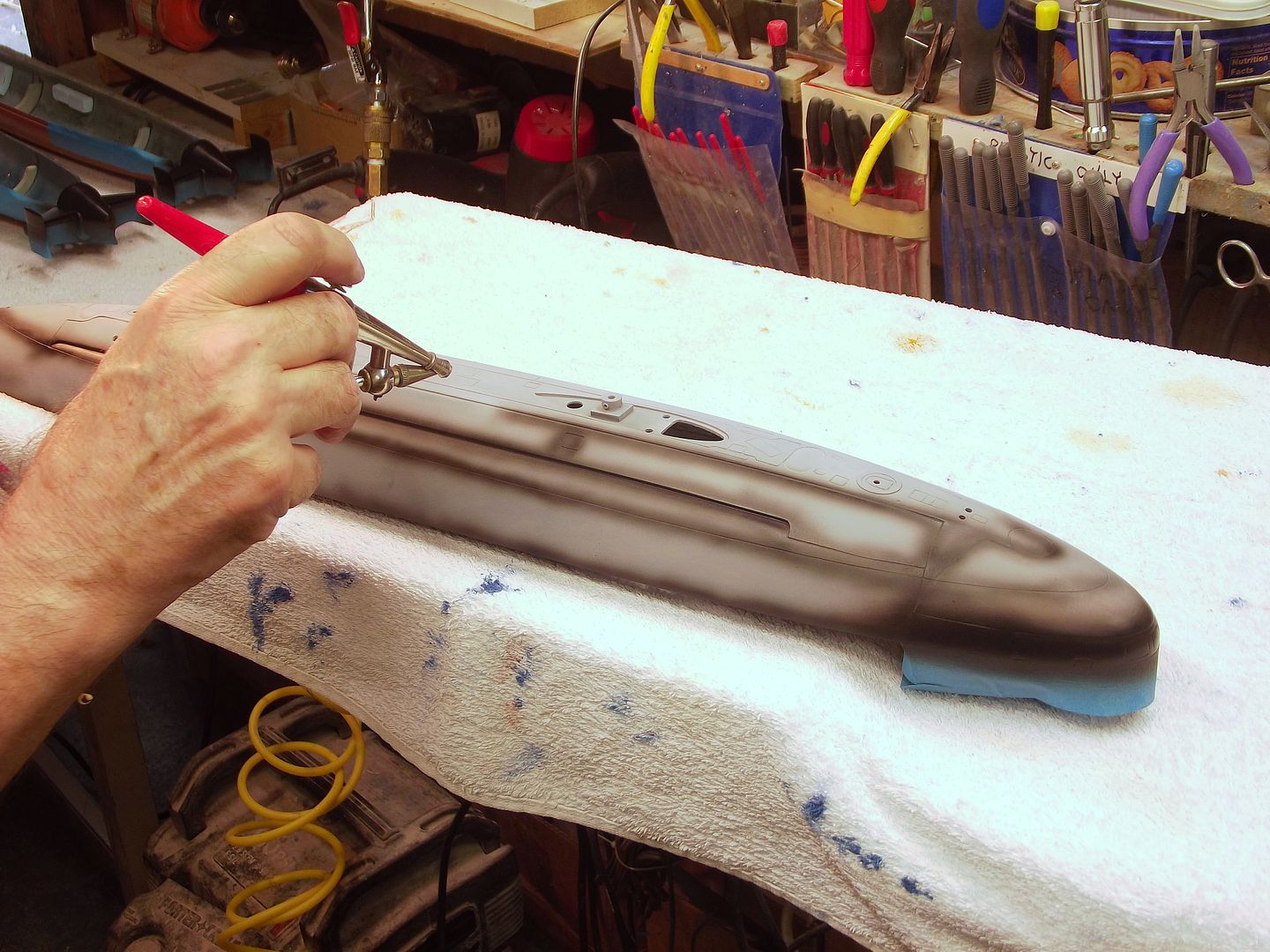
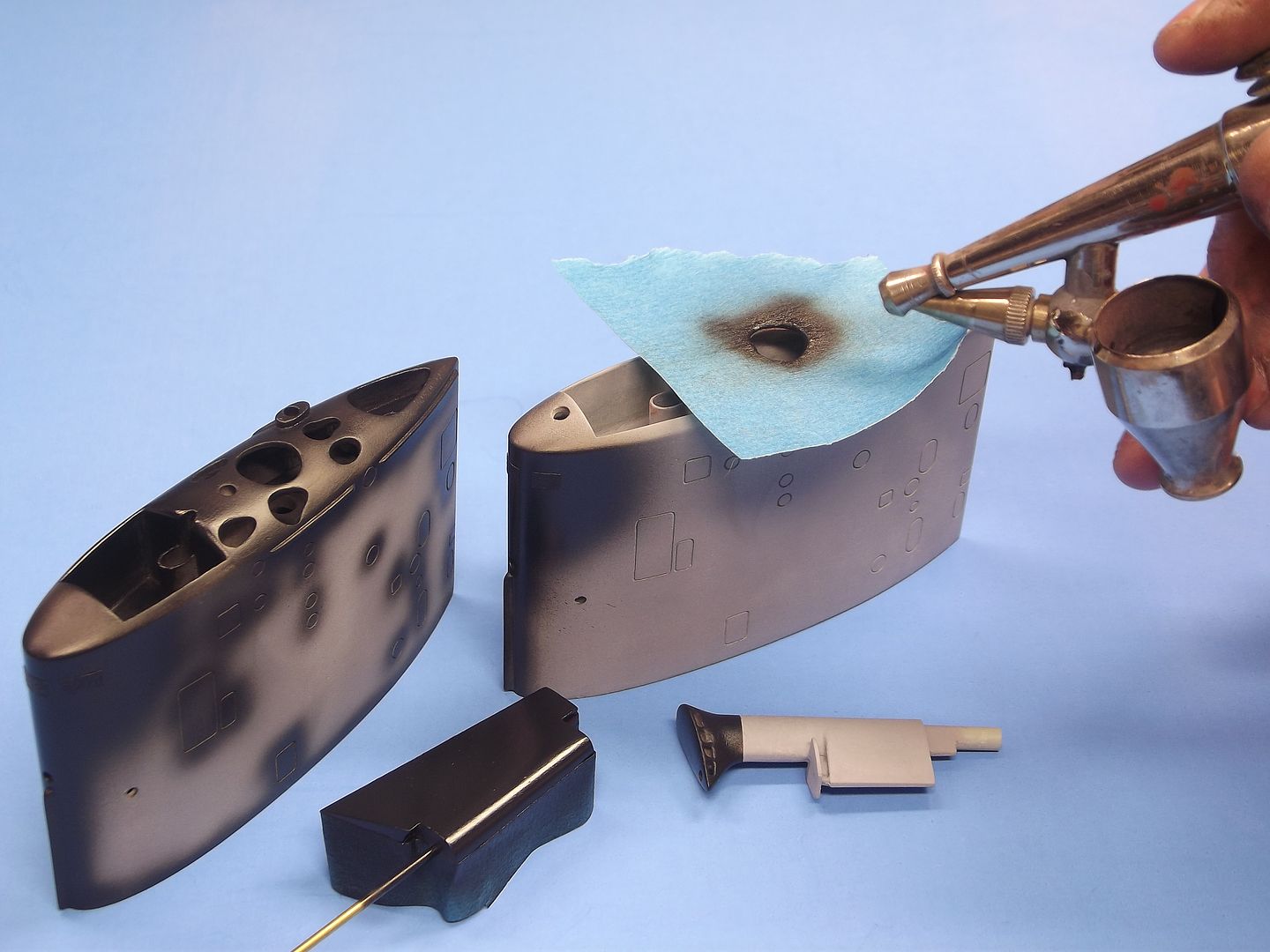
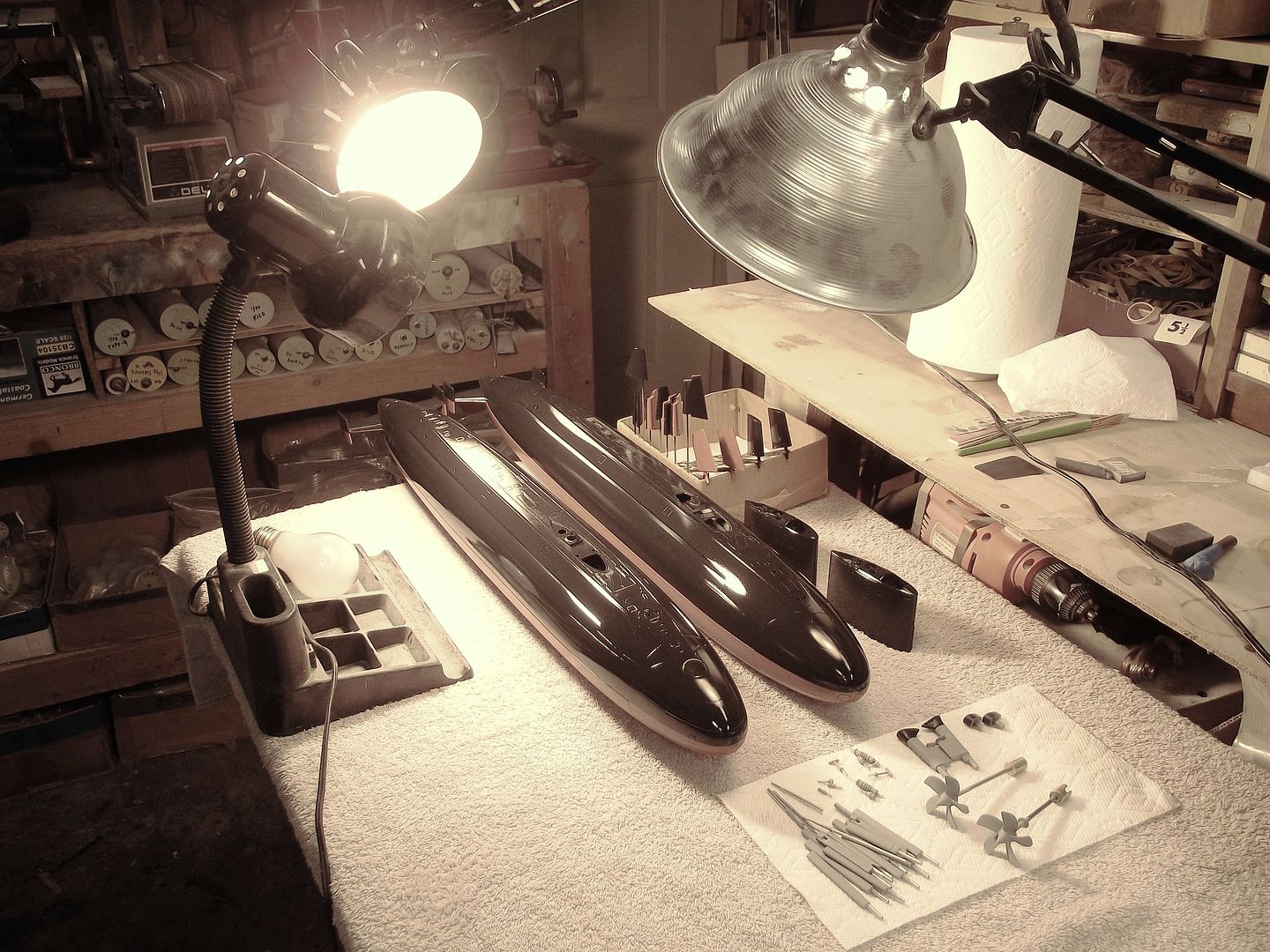
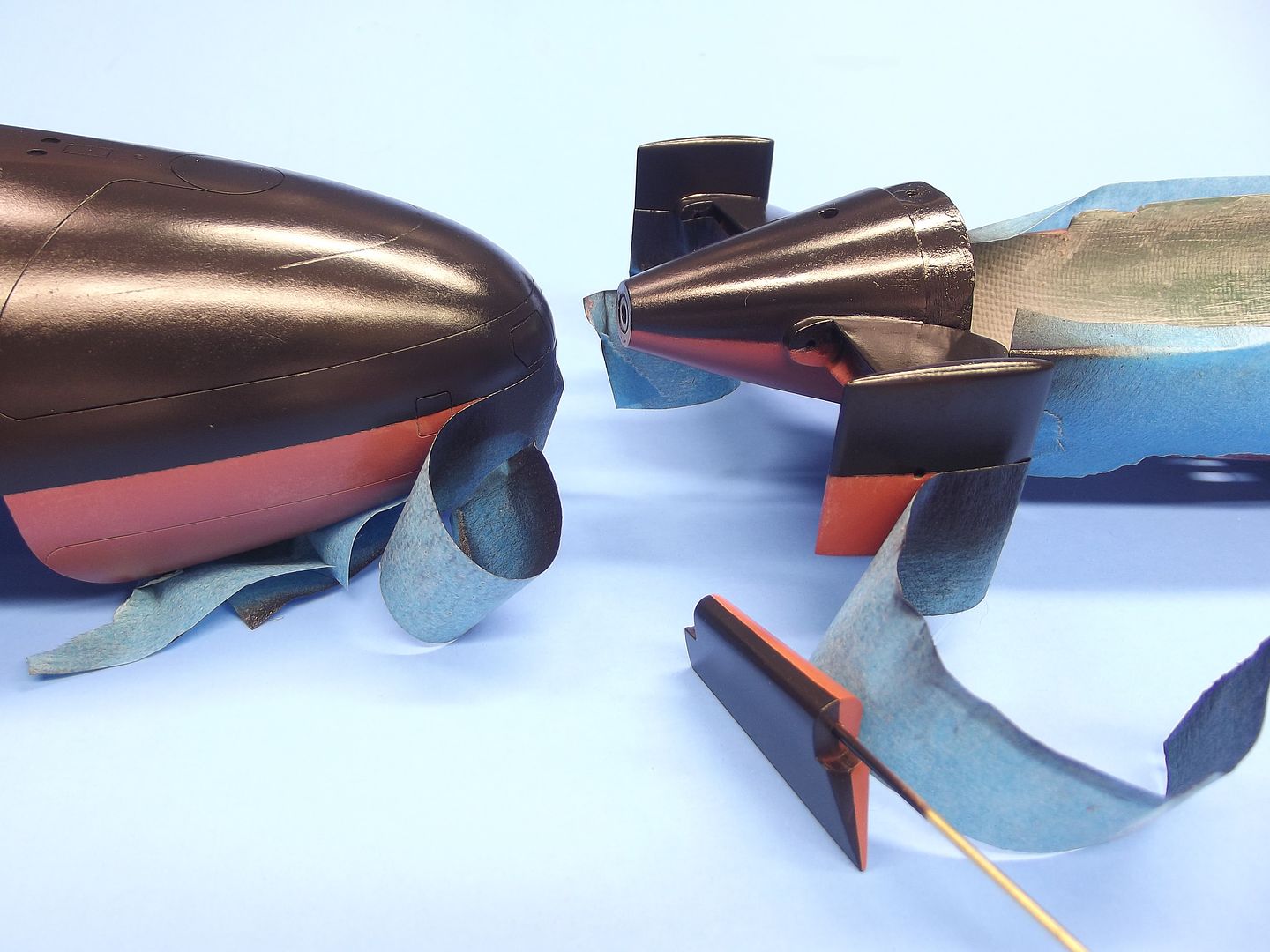
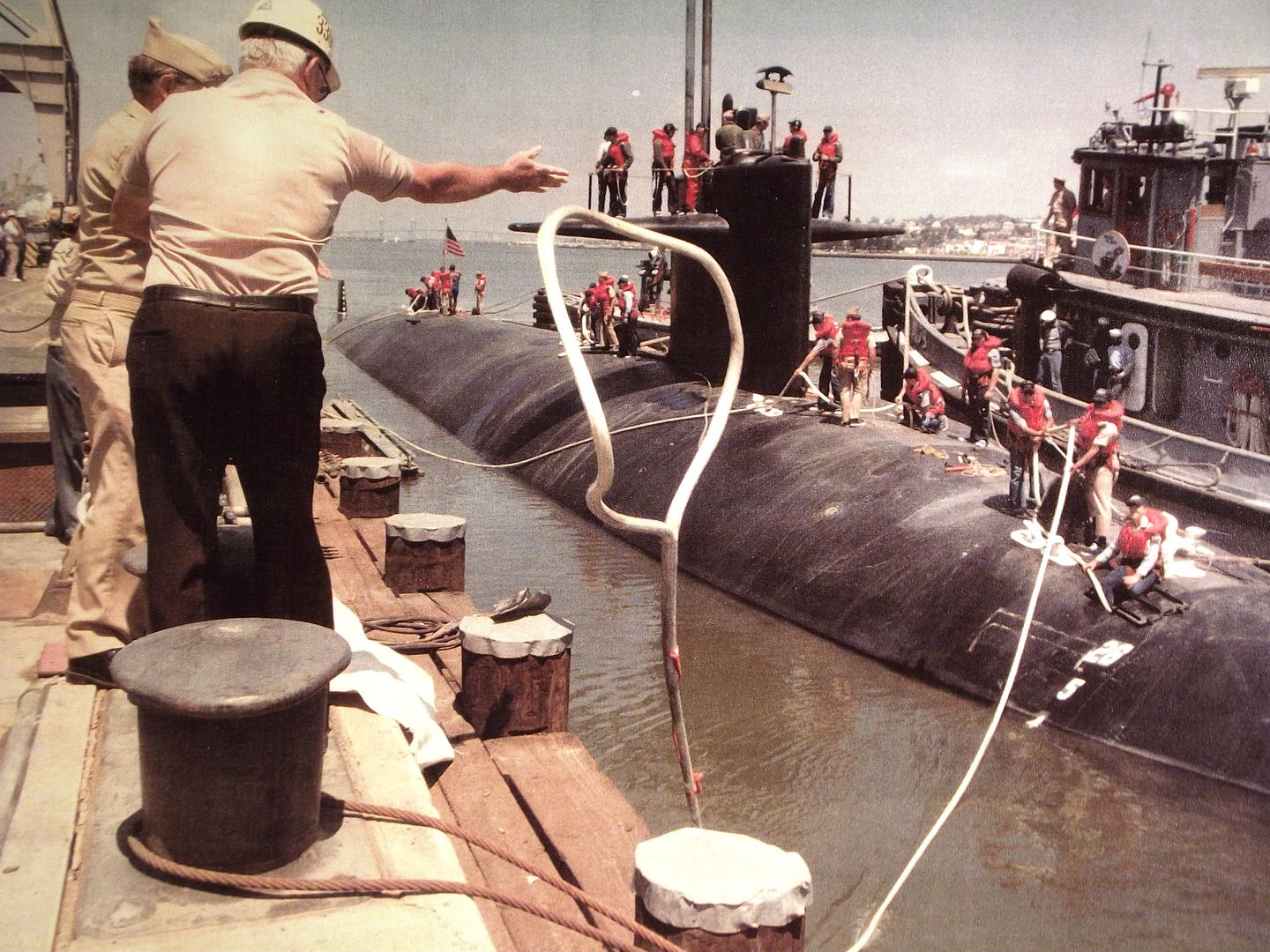
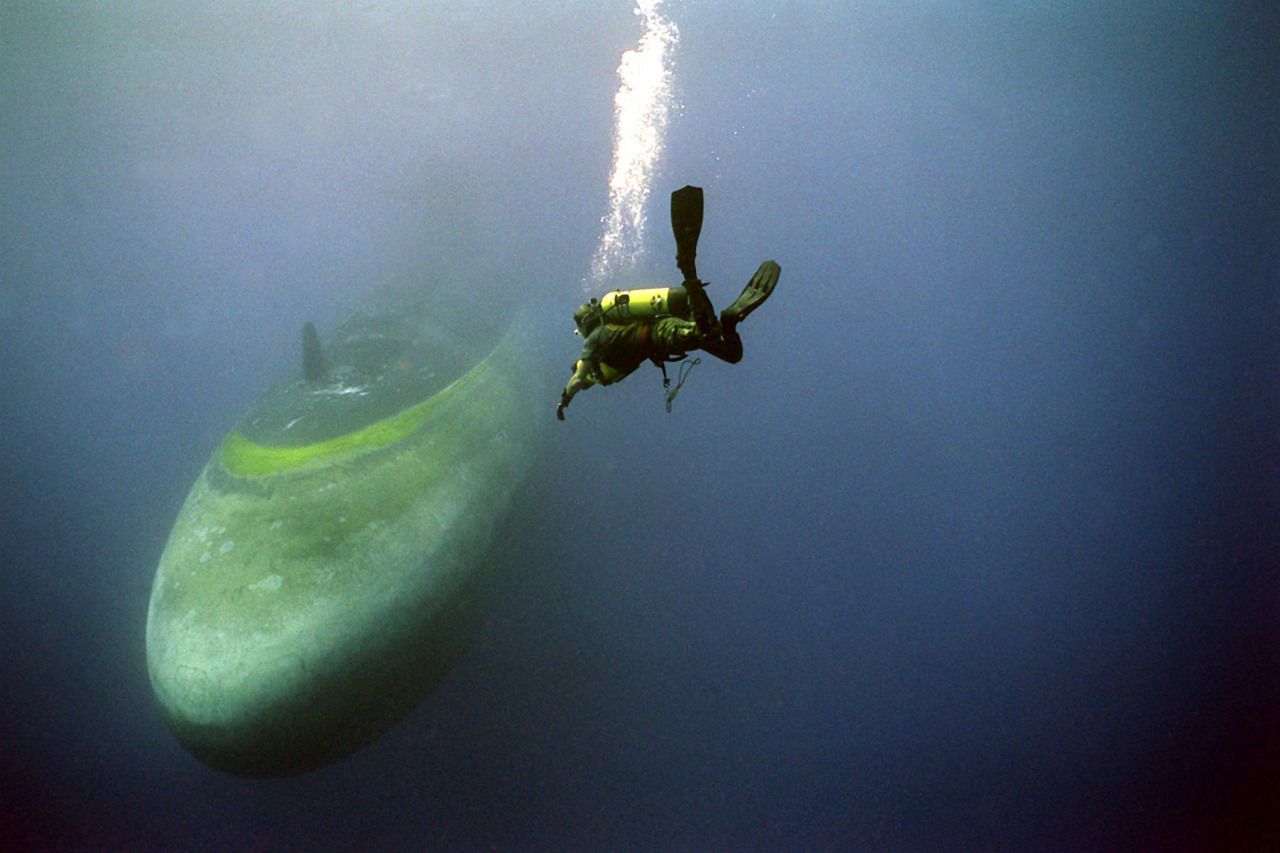
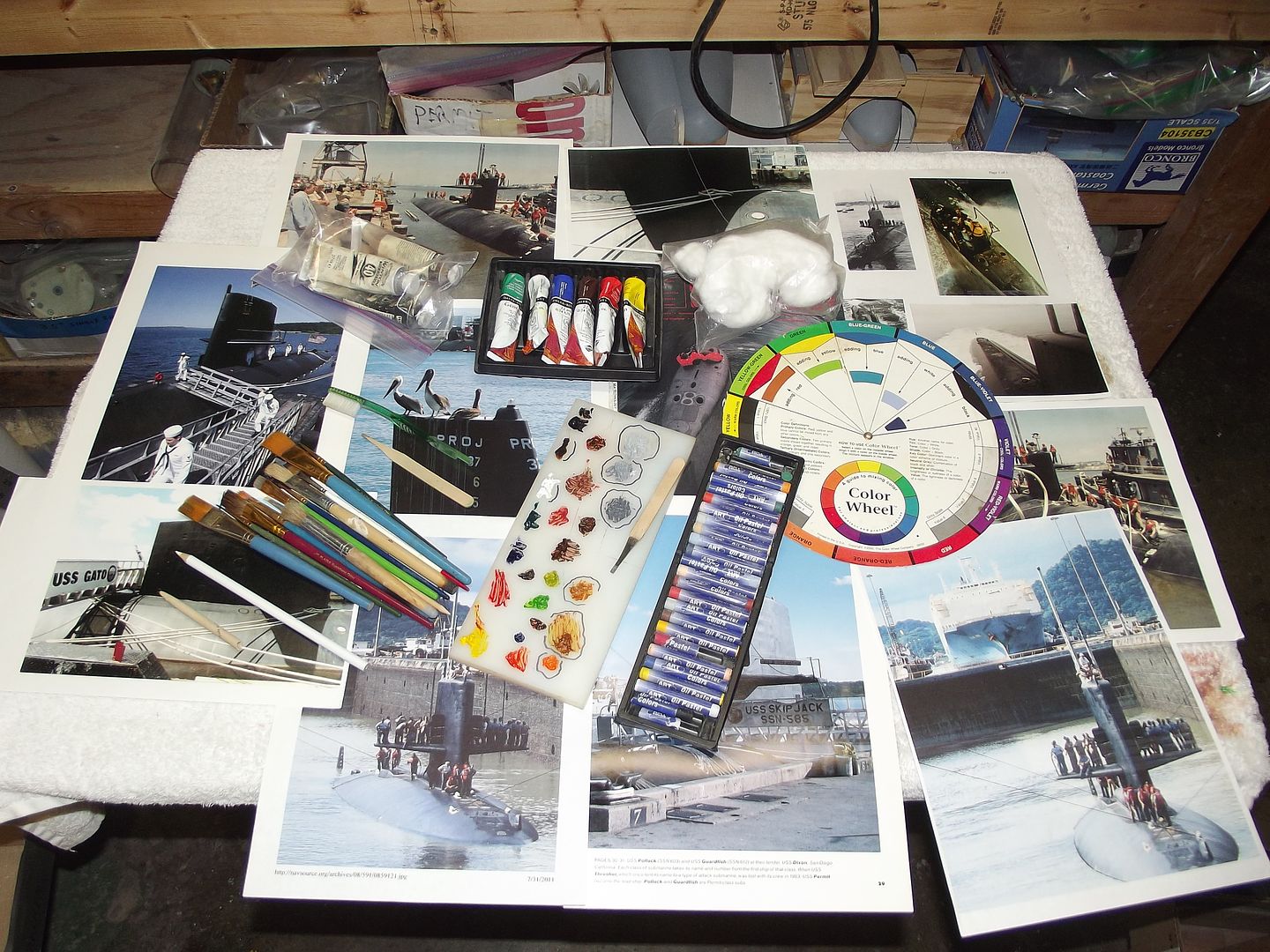



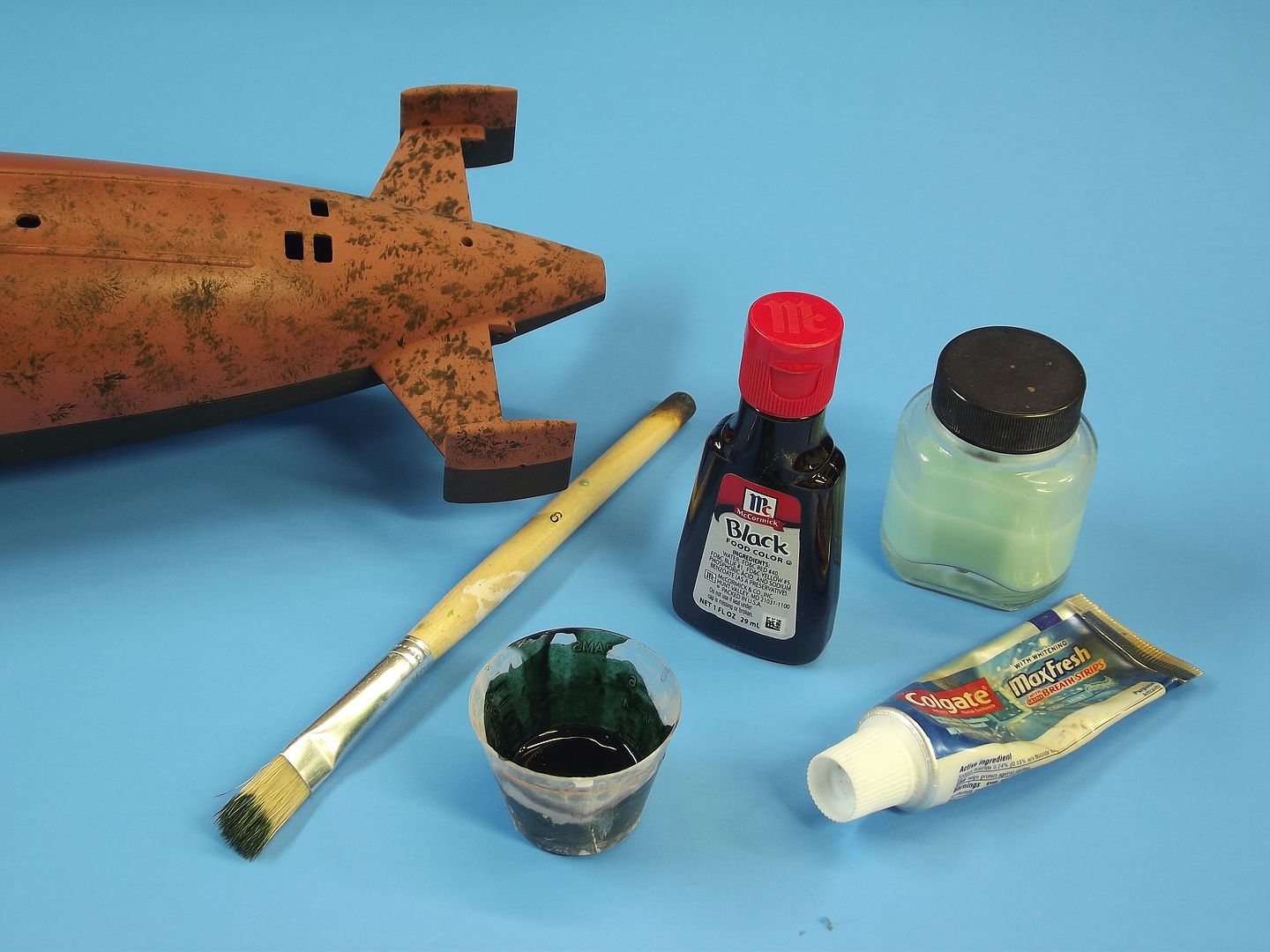
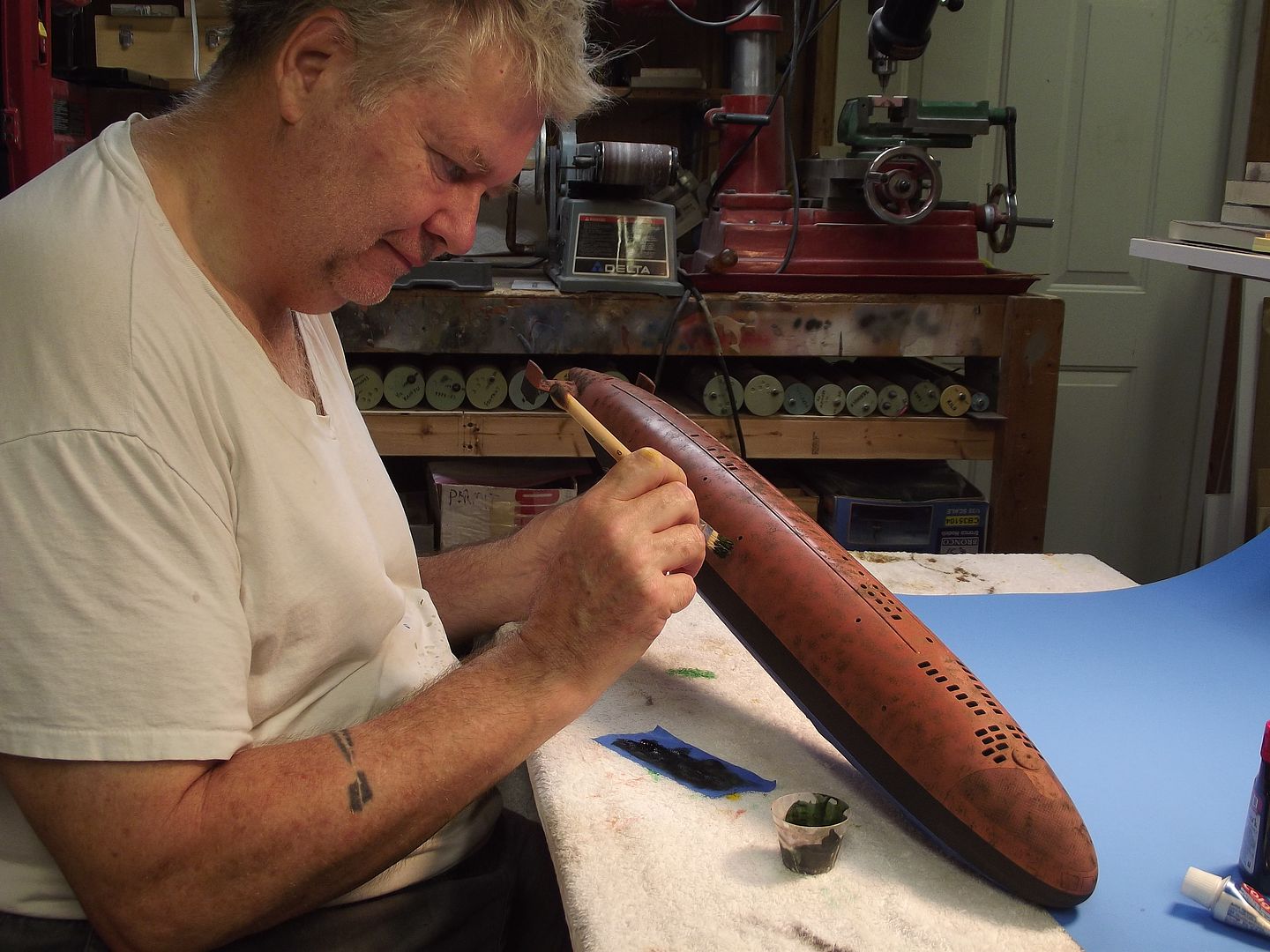
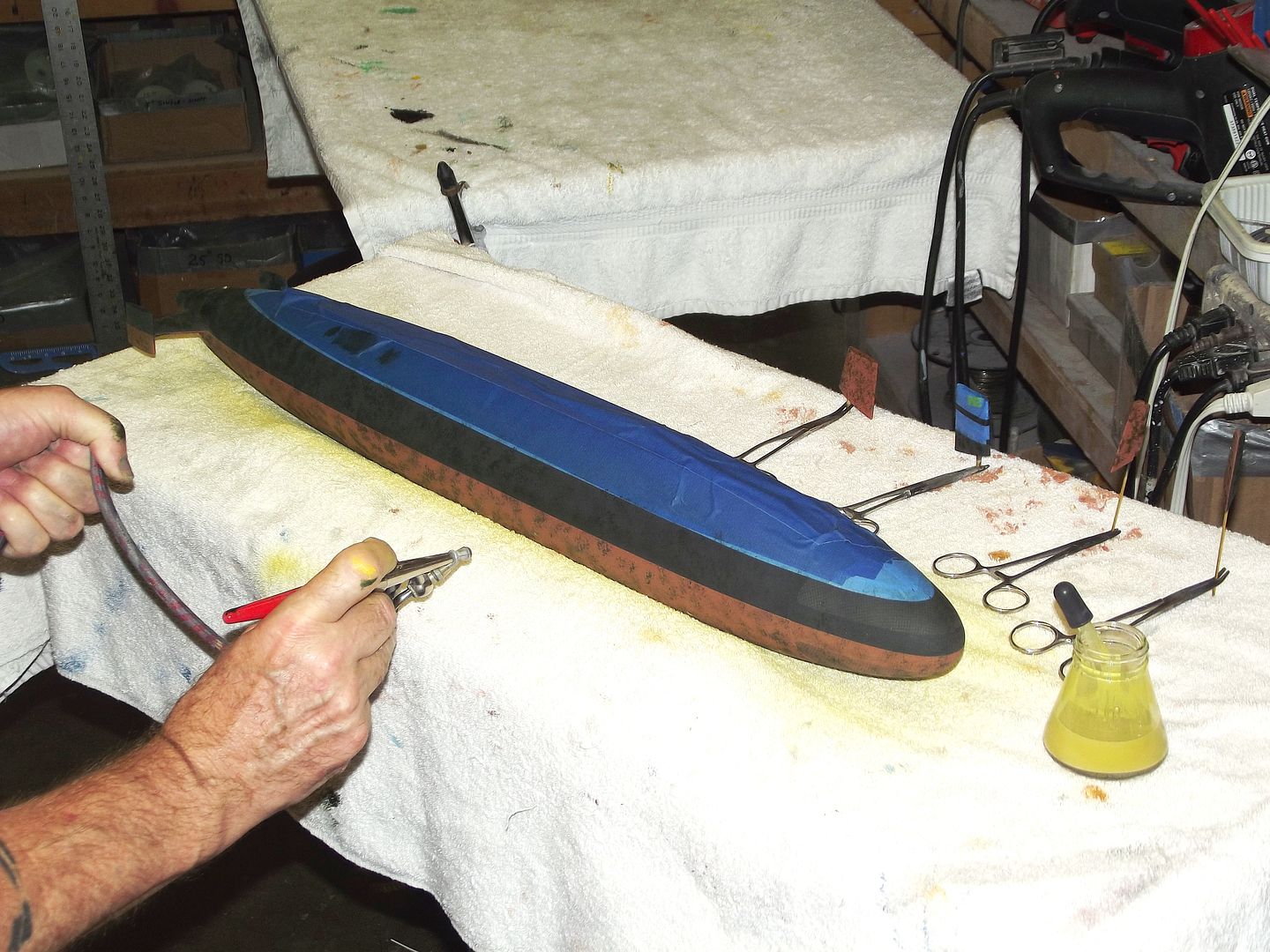







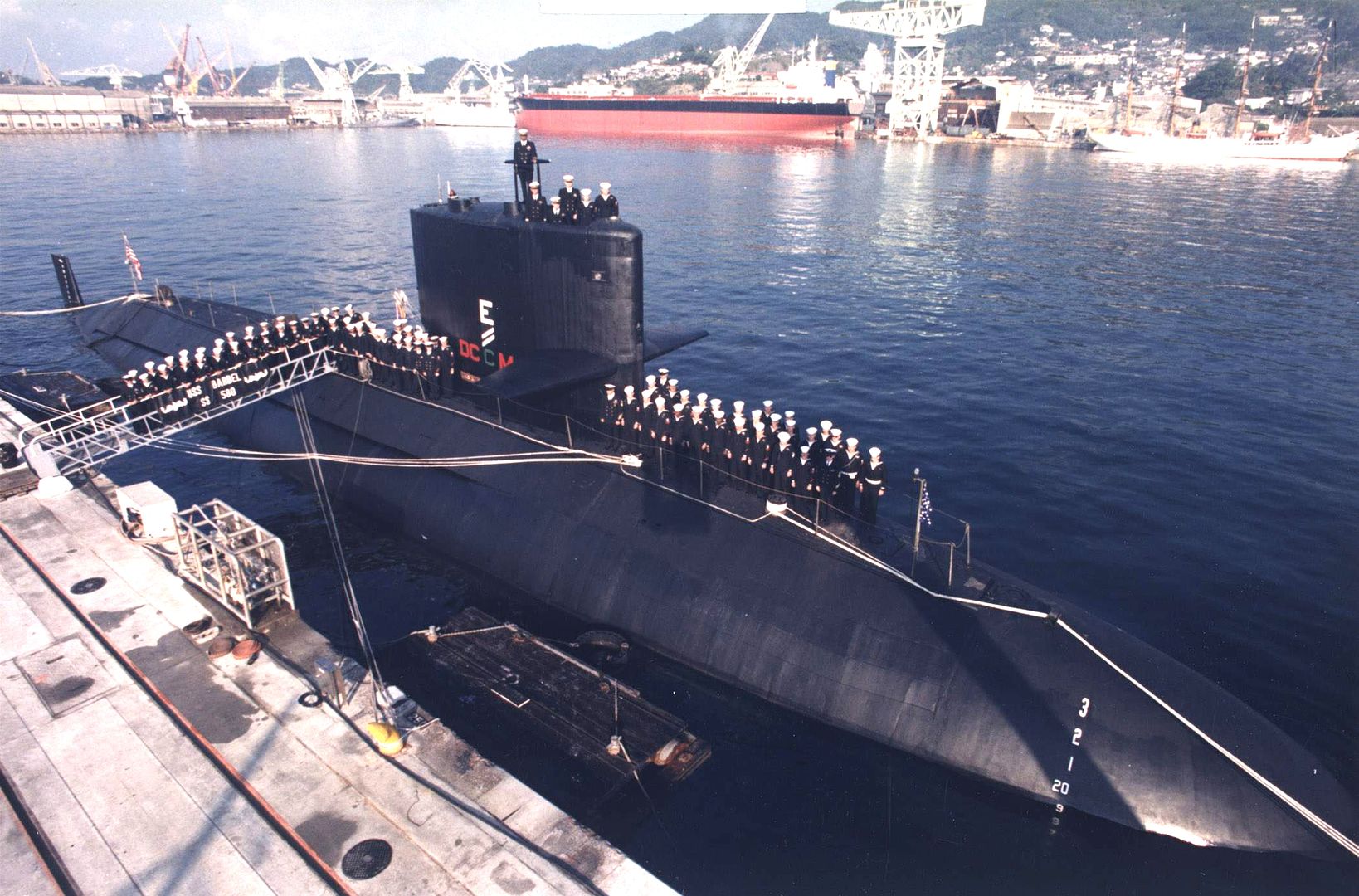




Comment